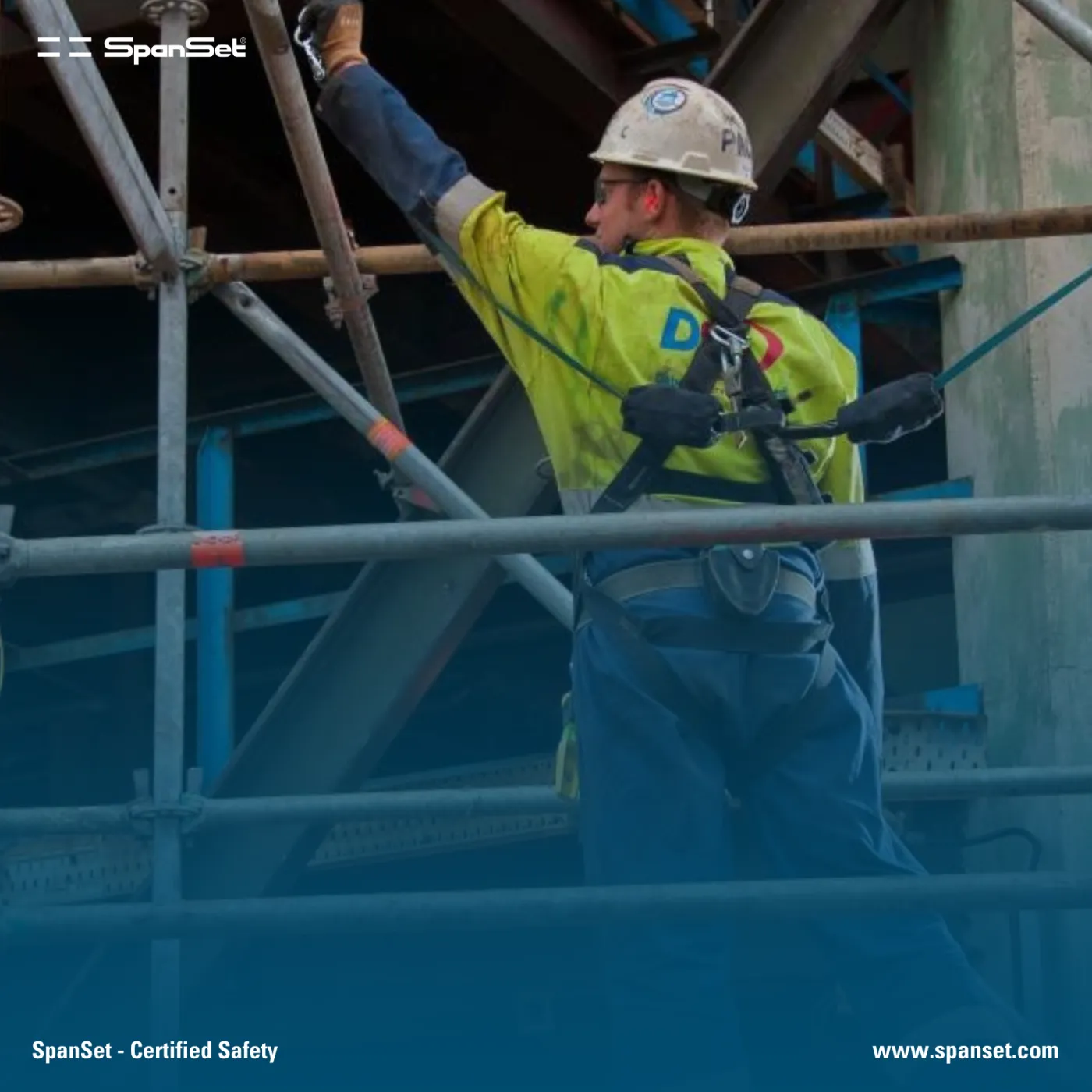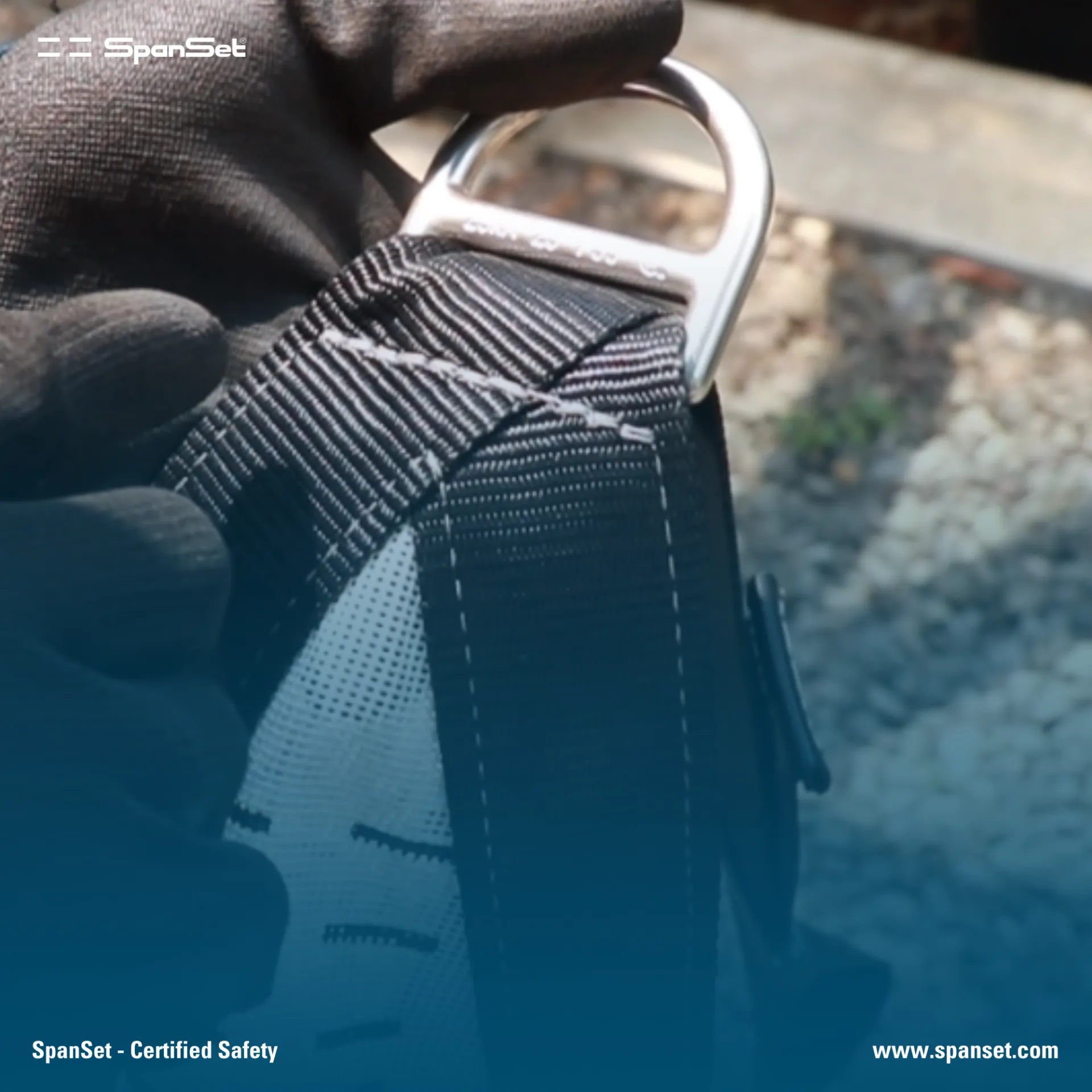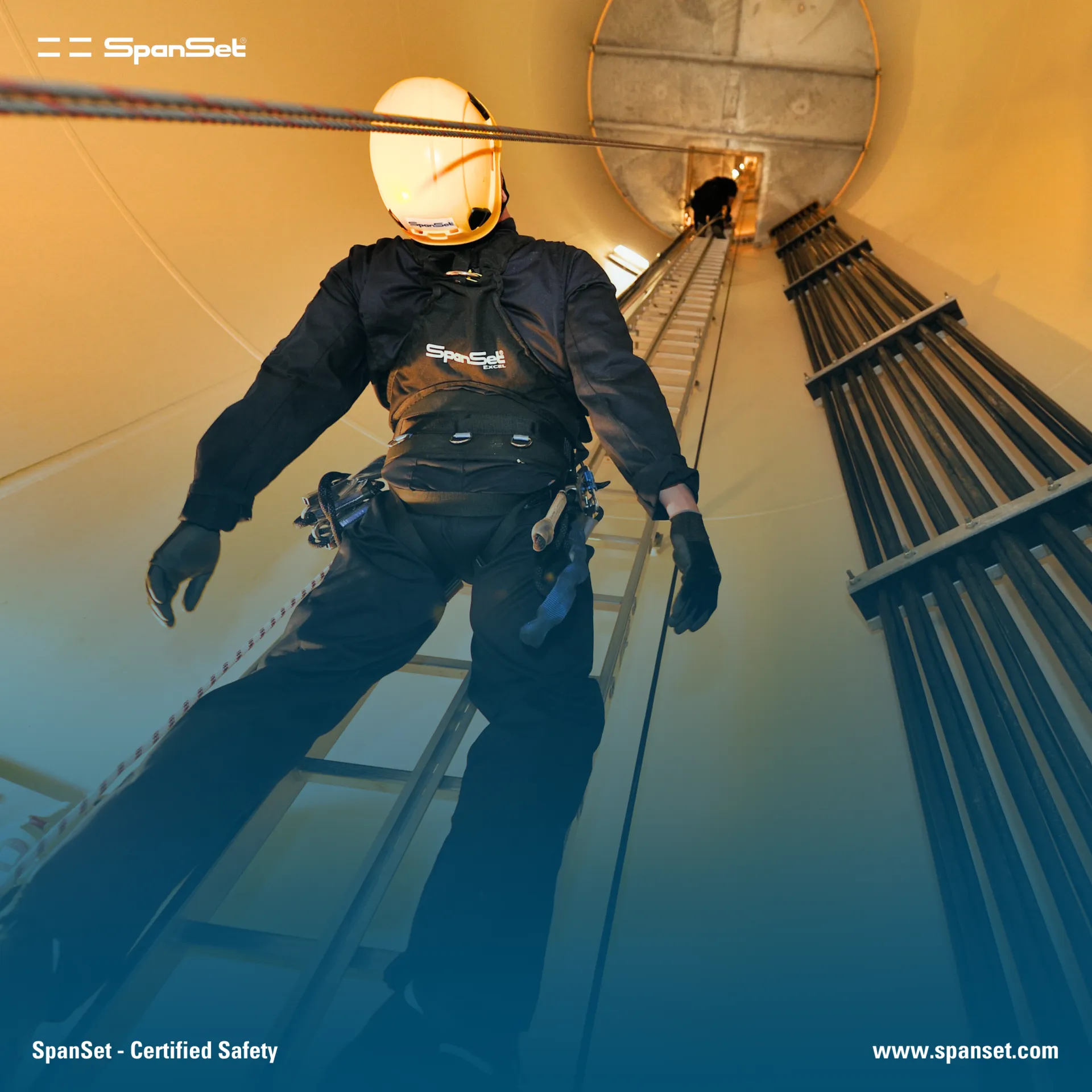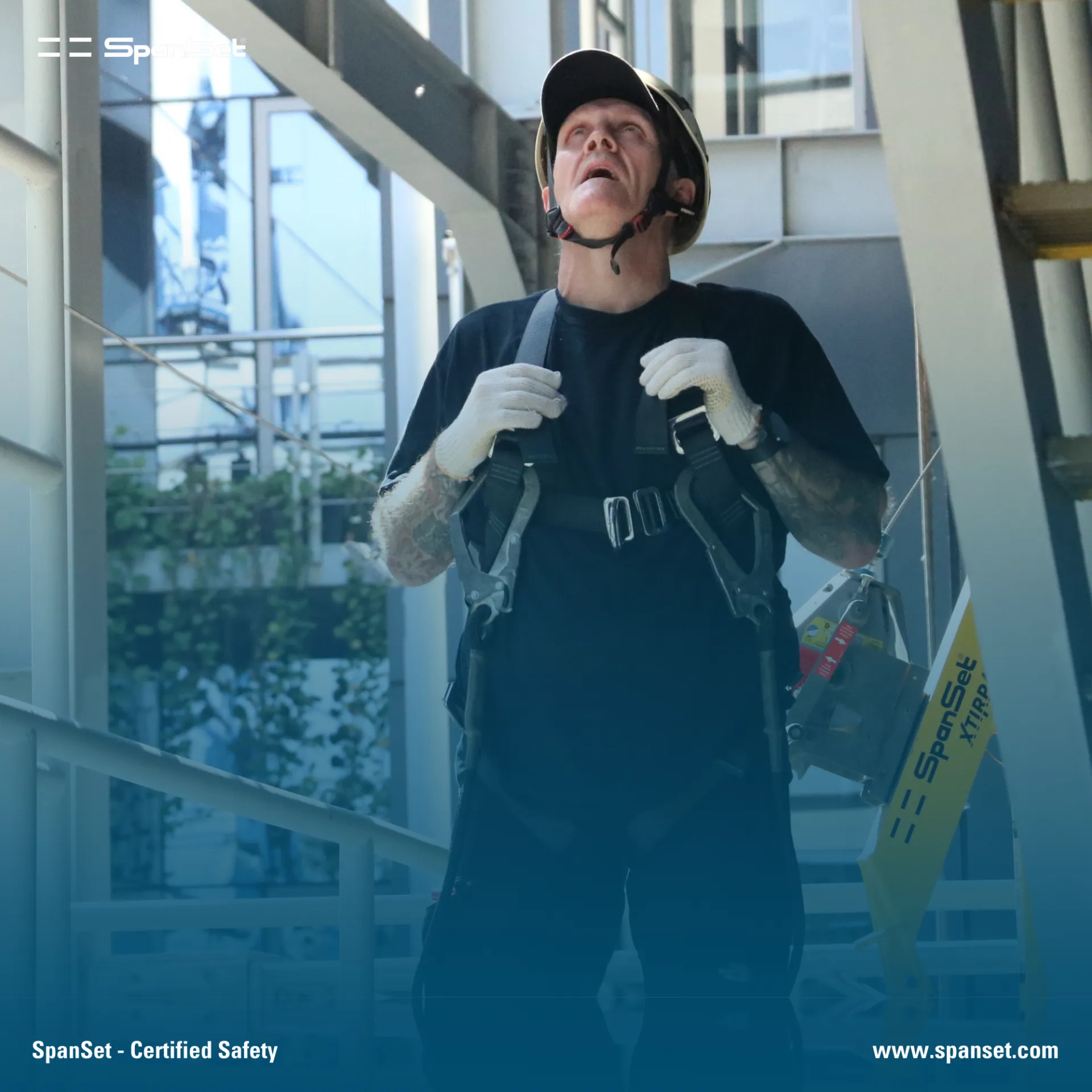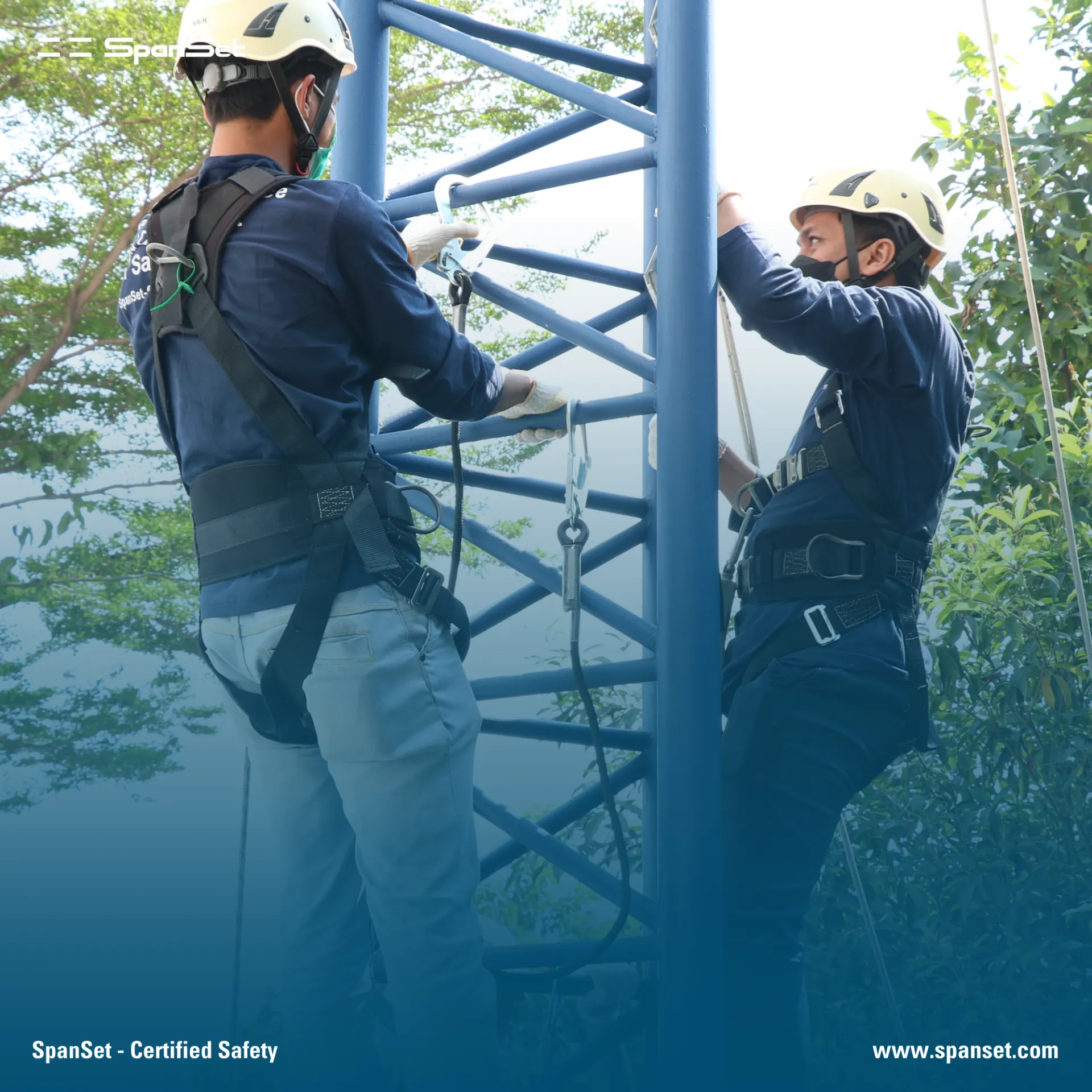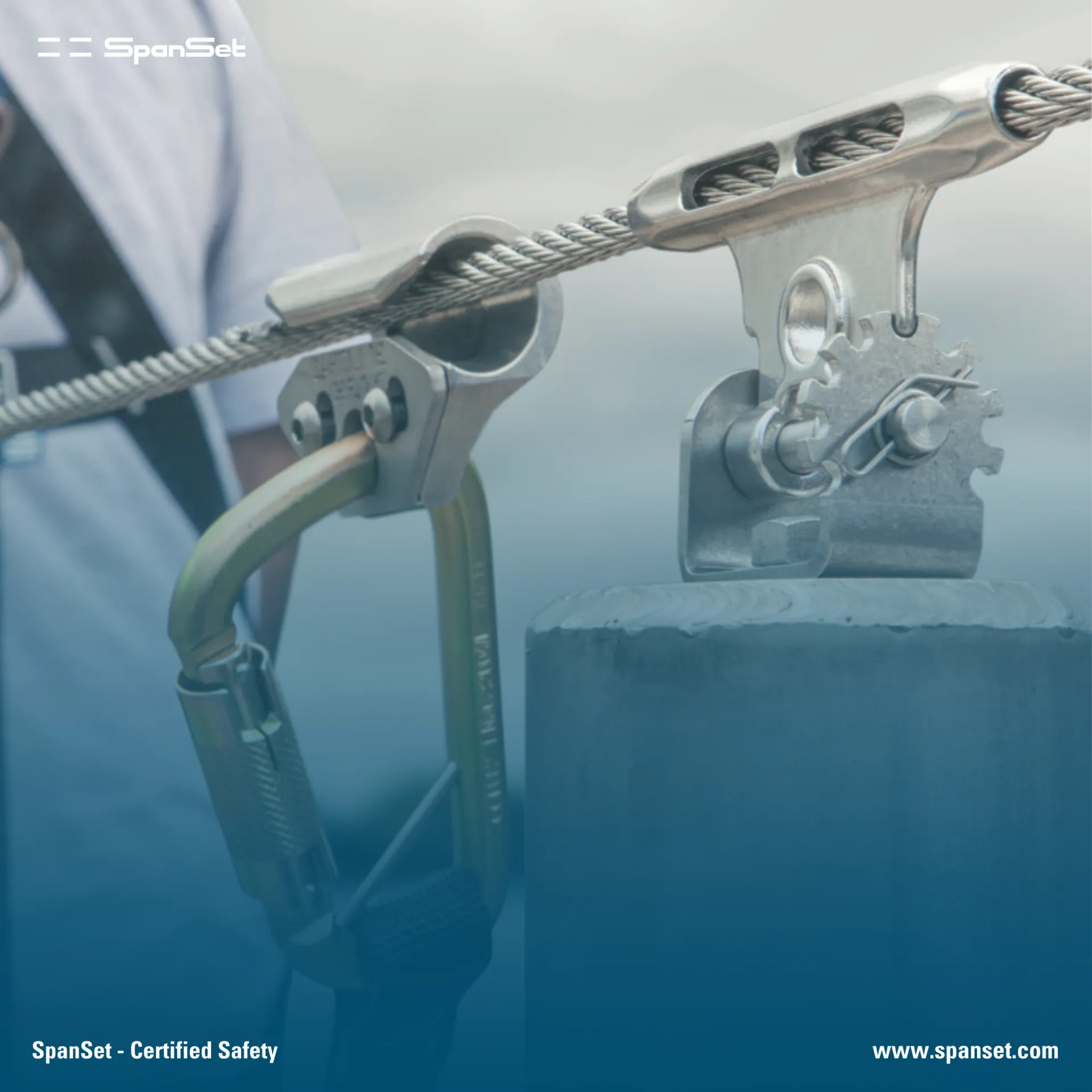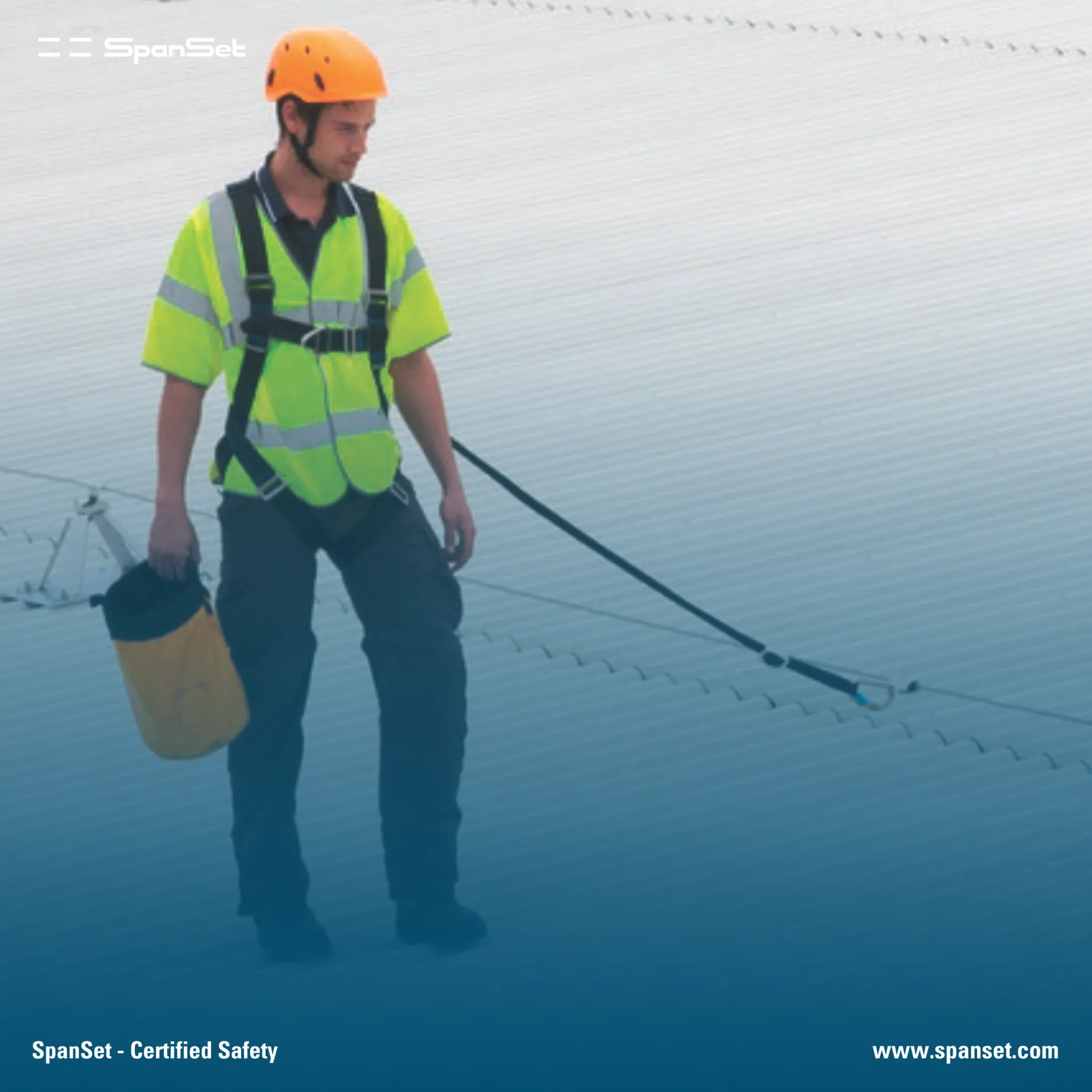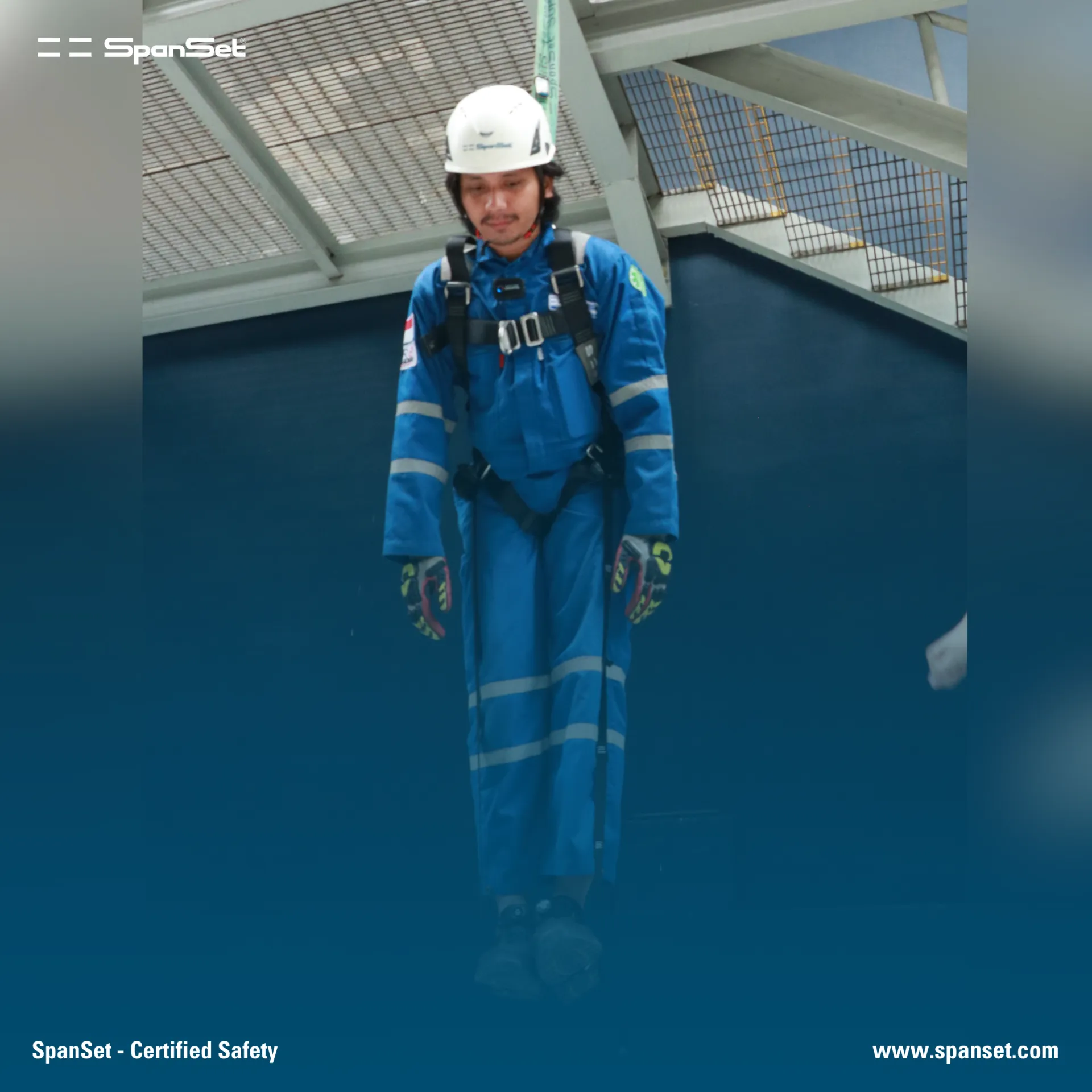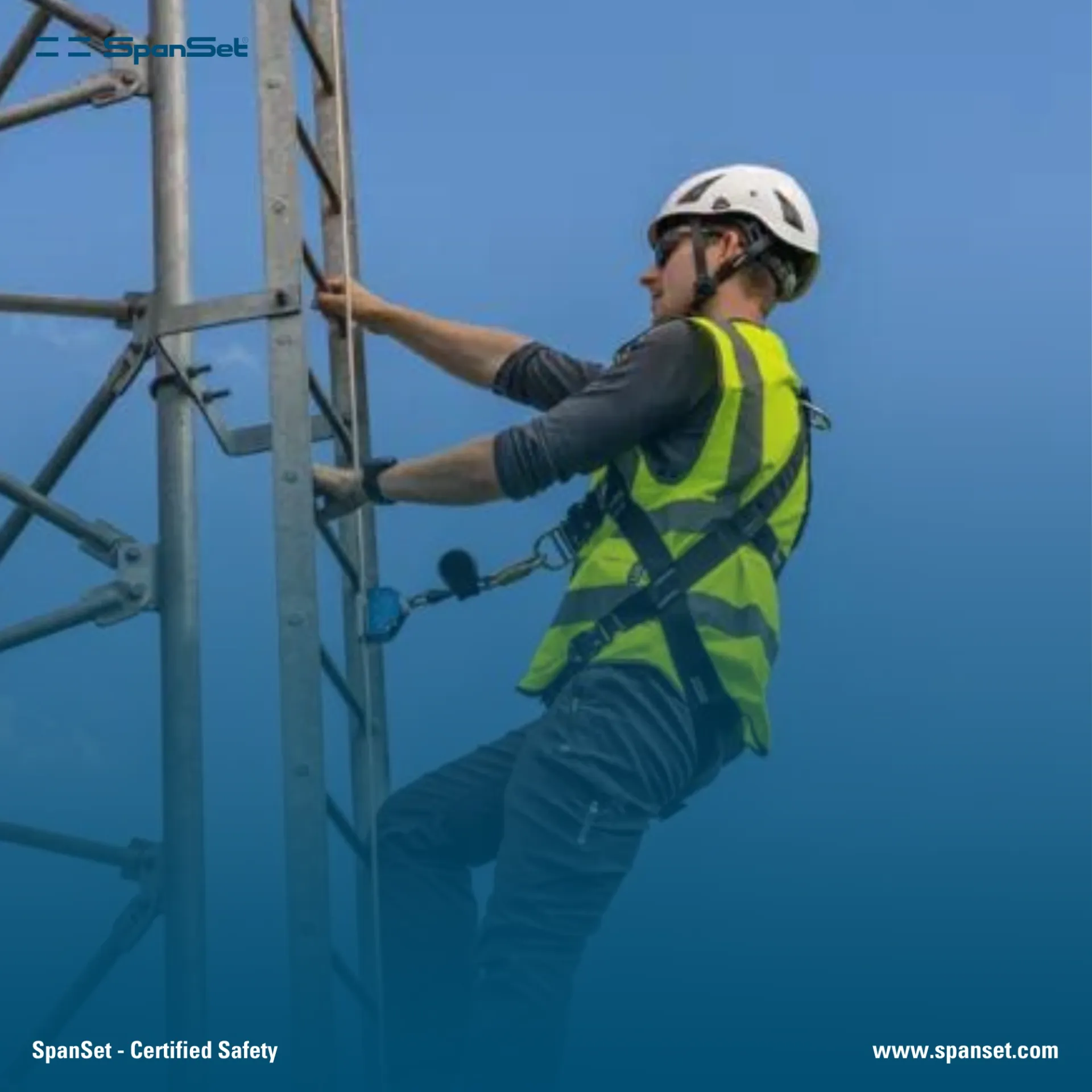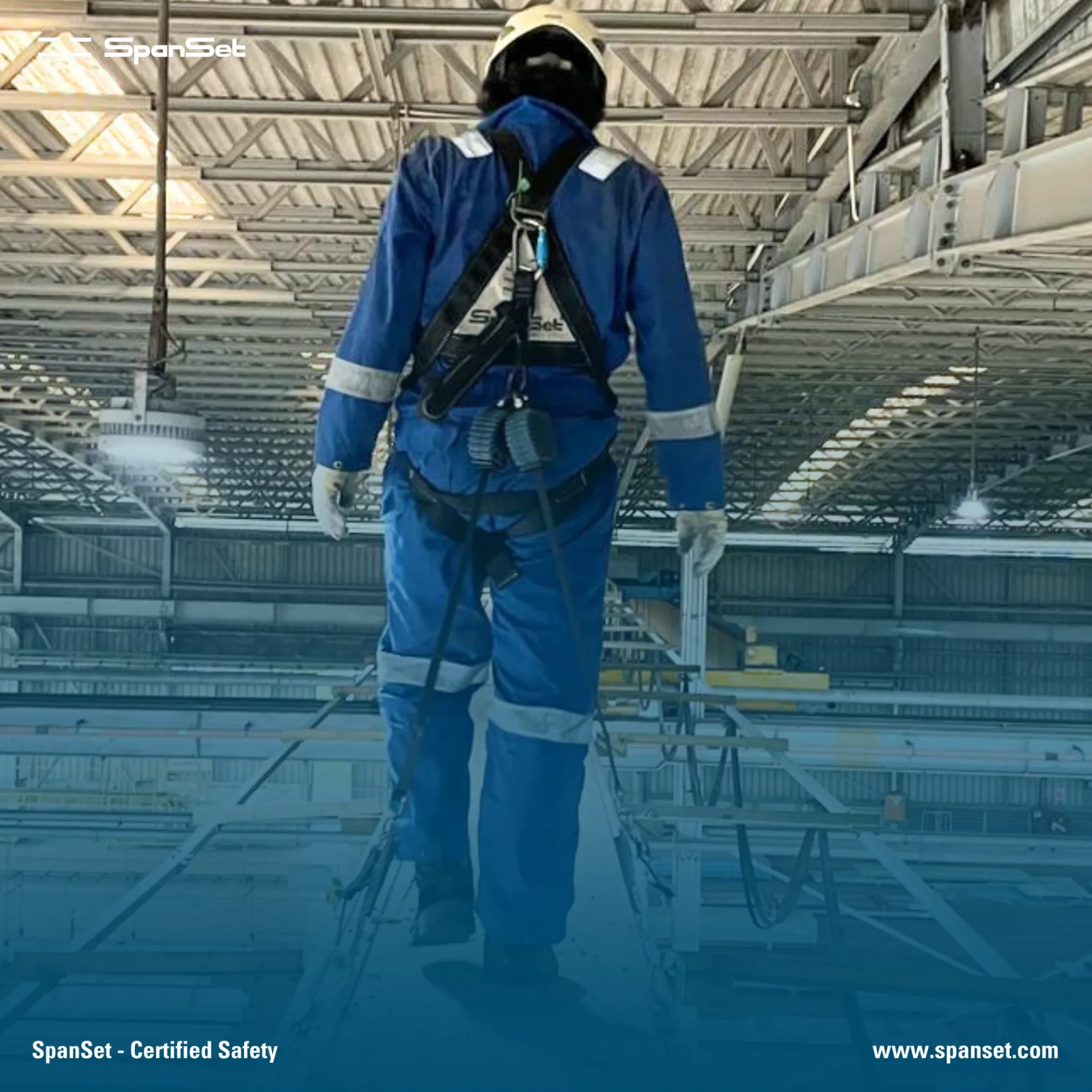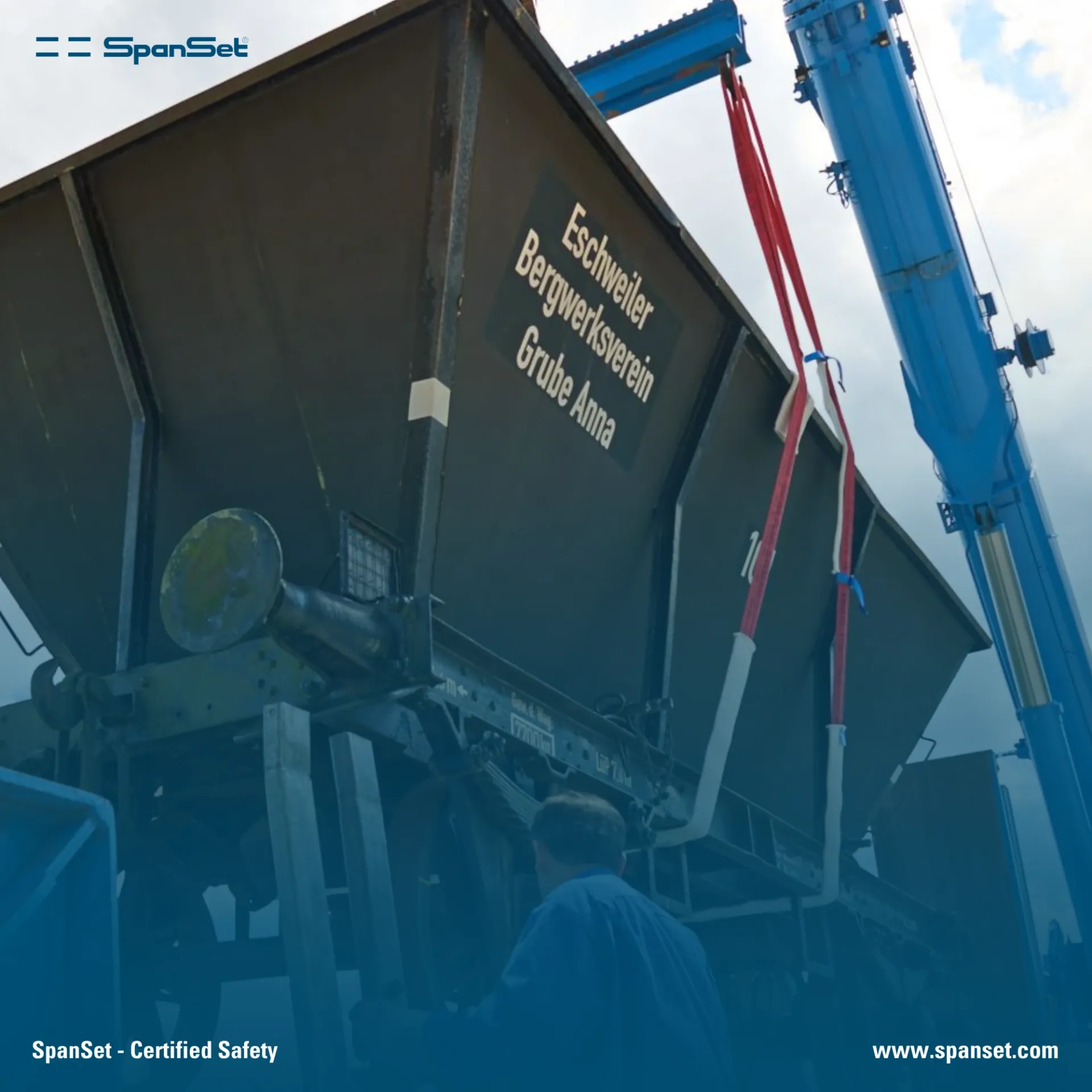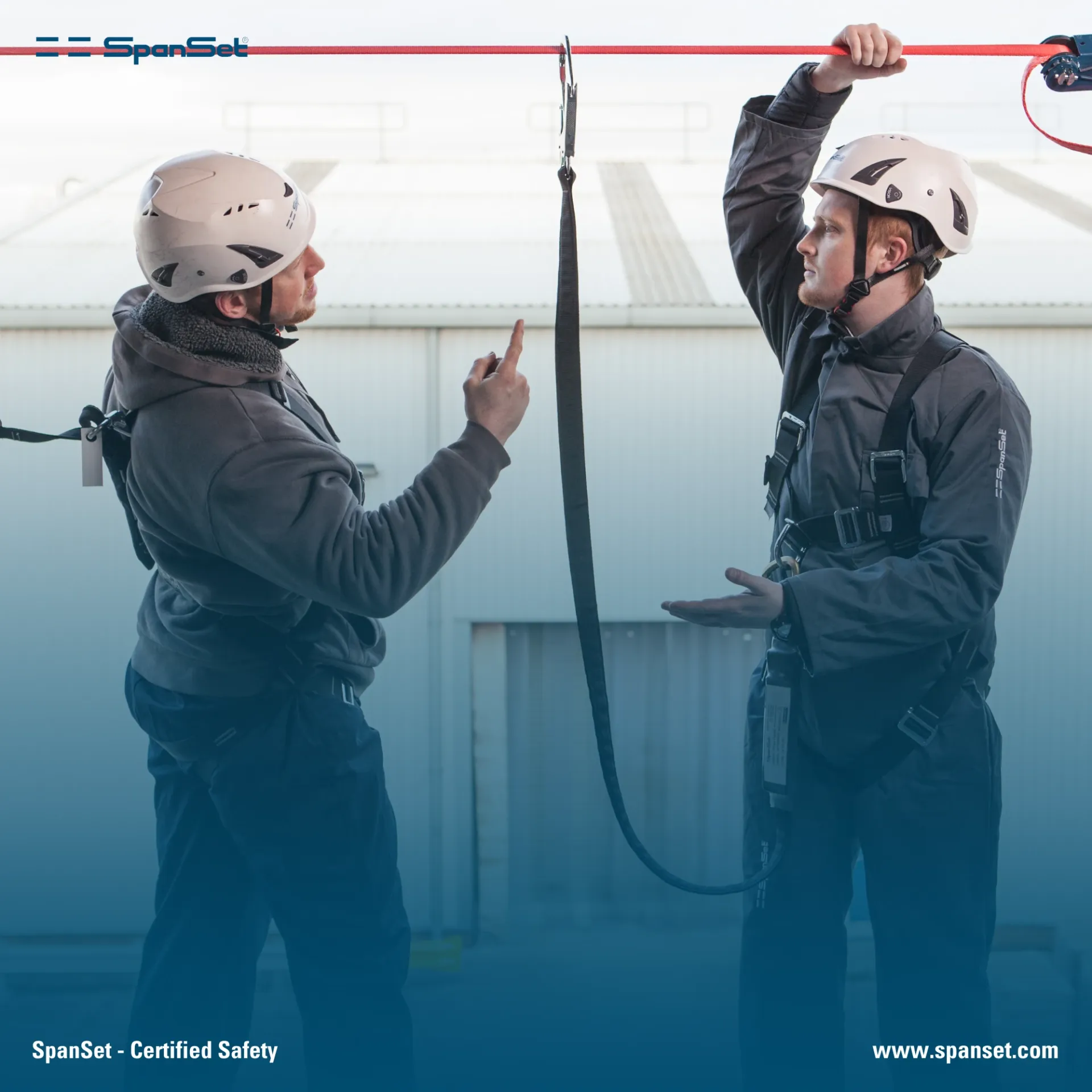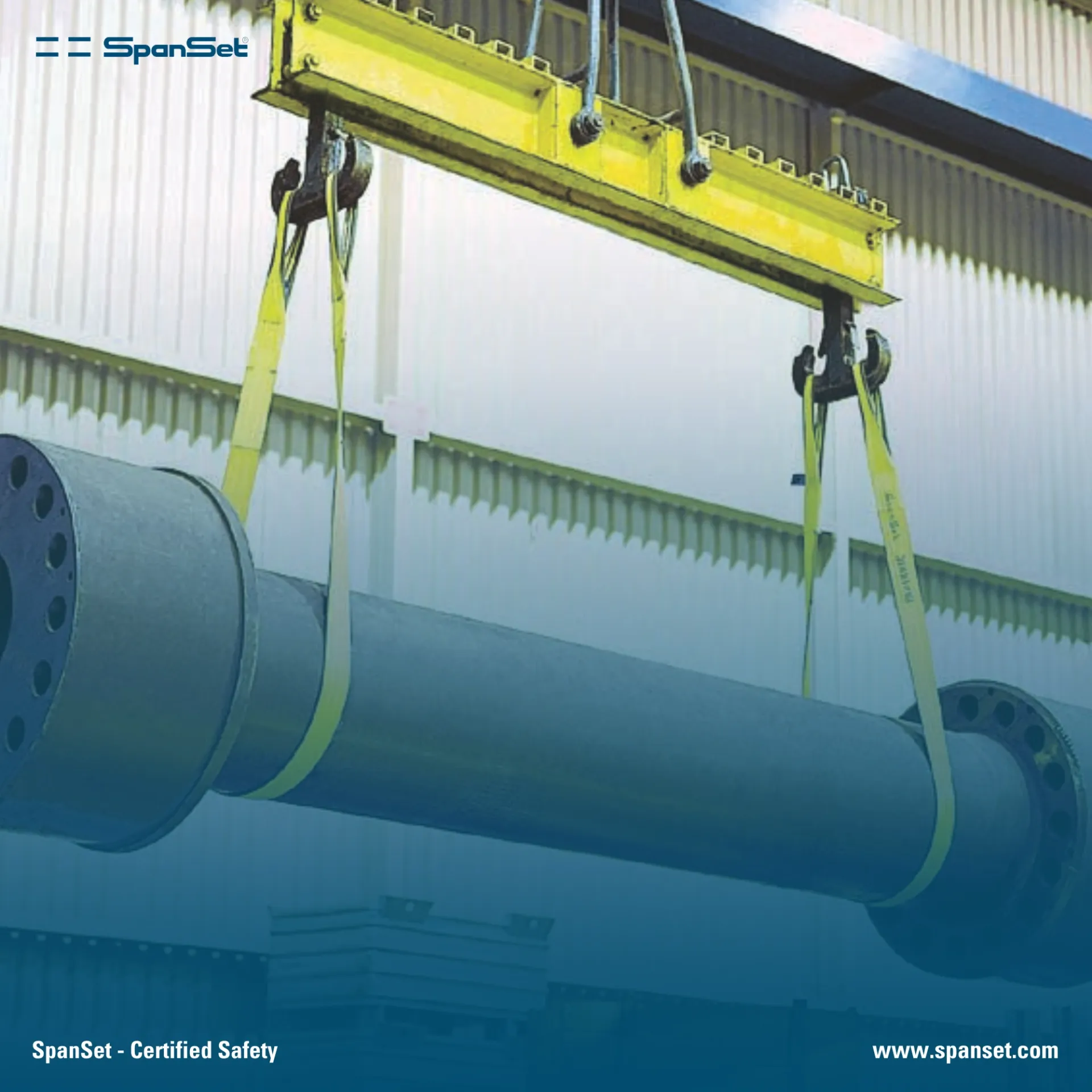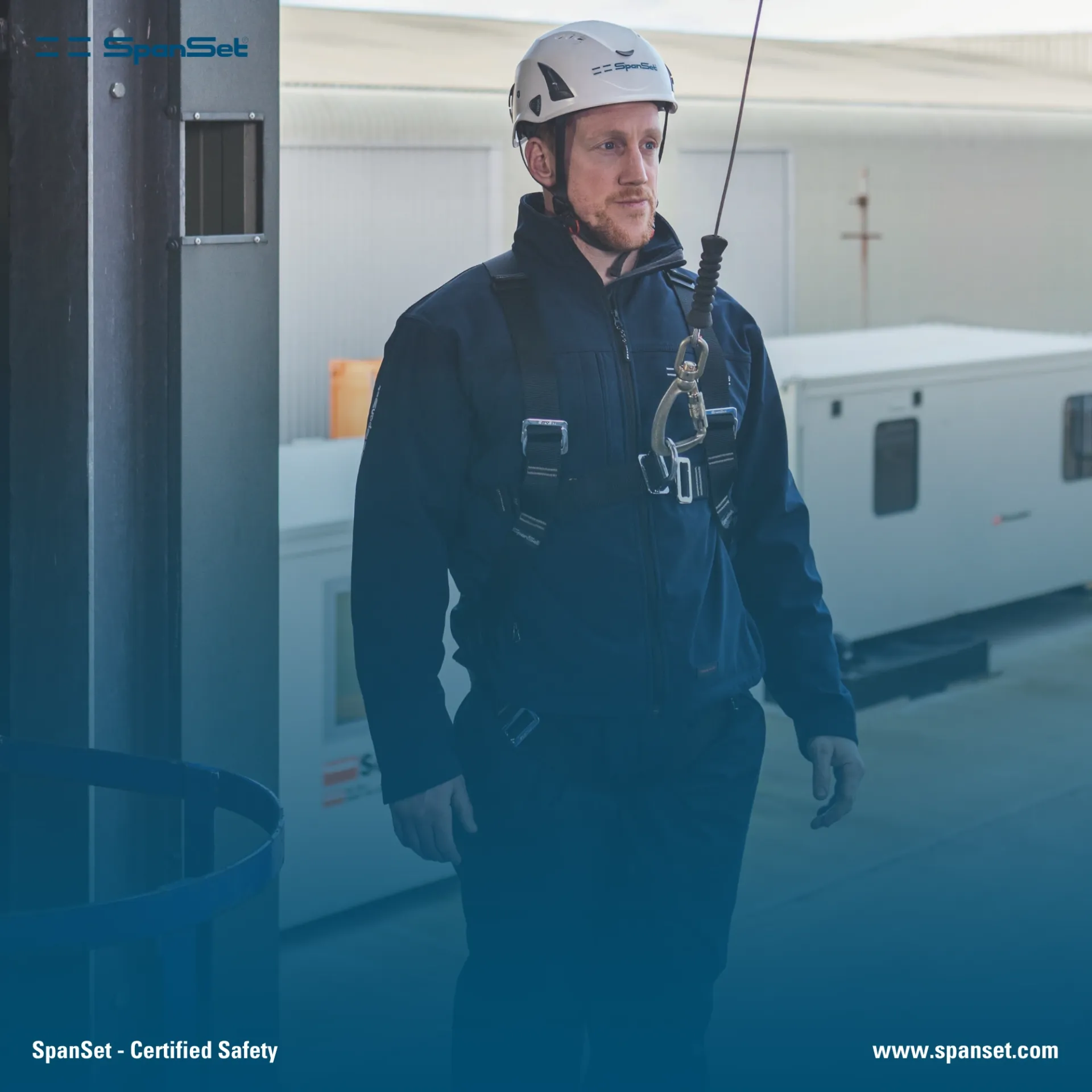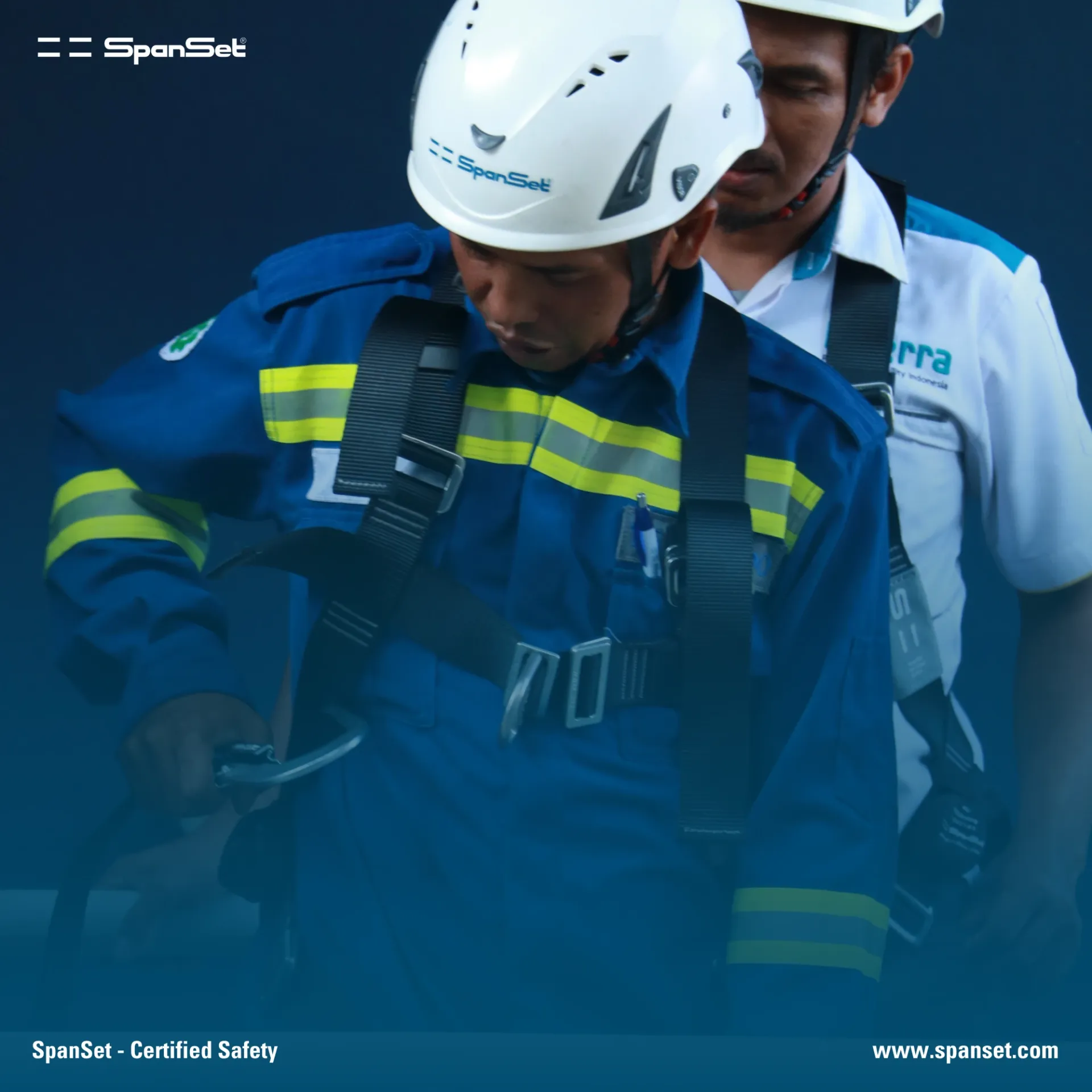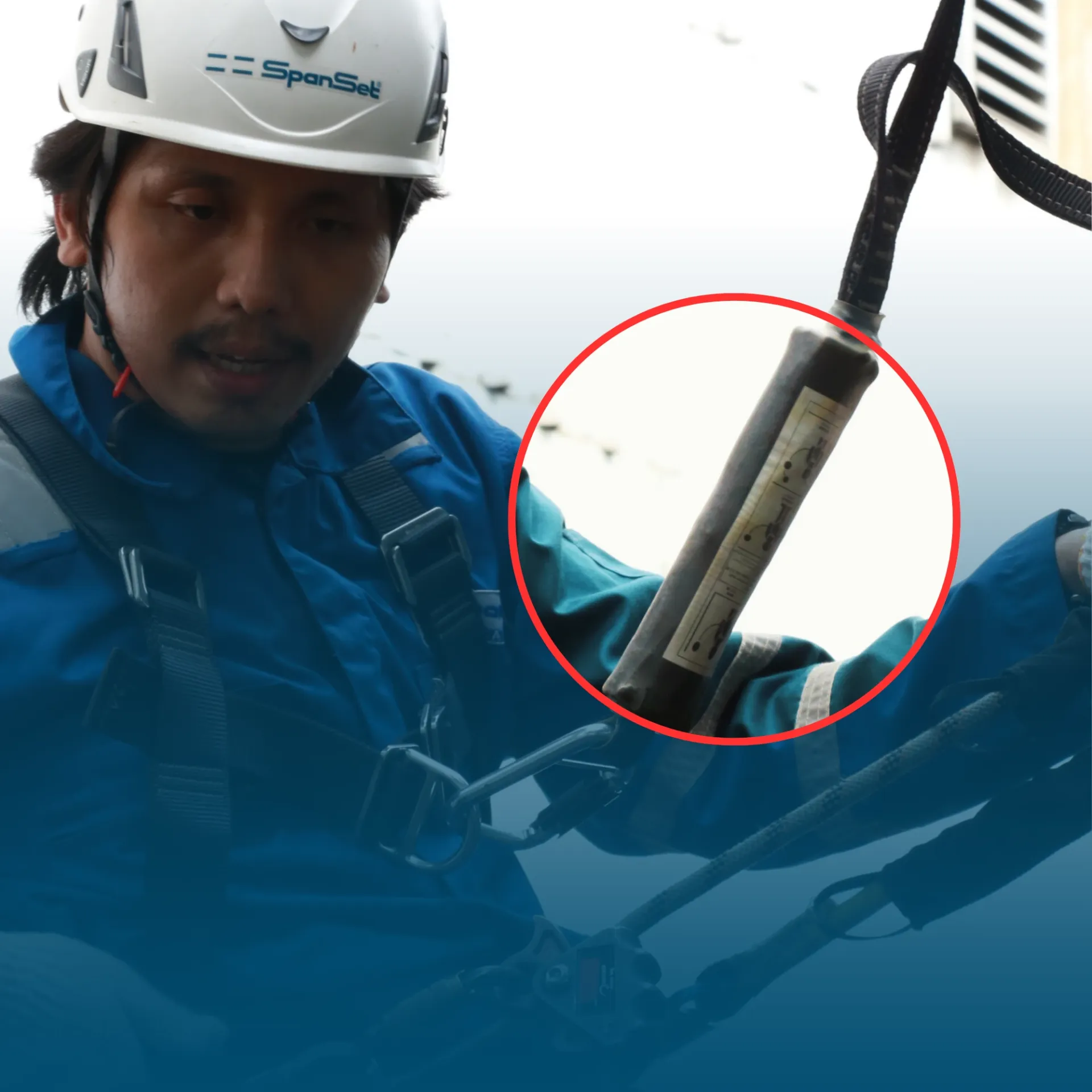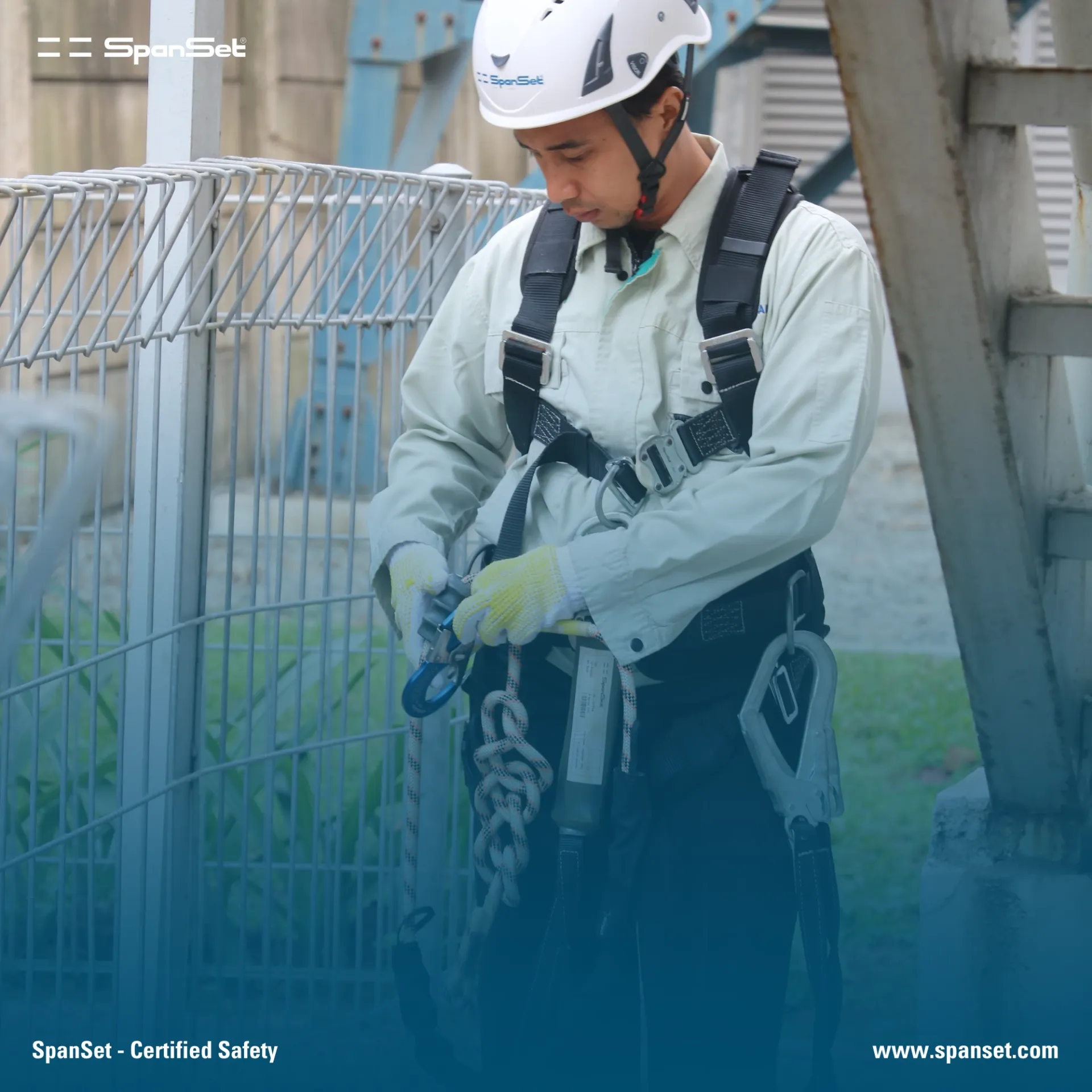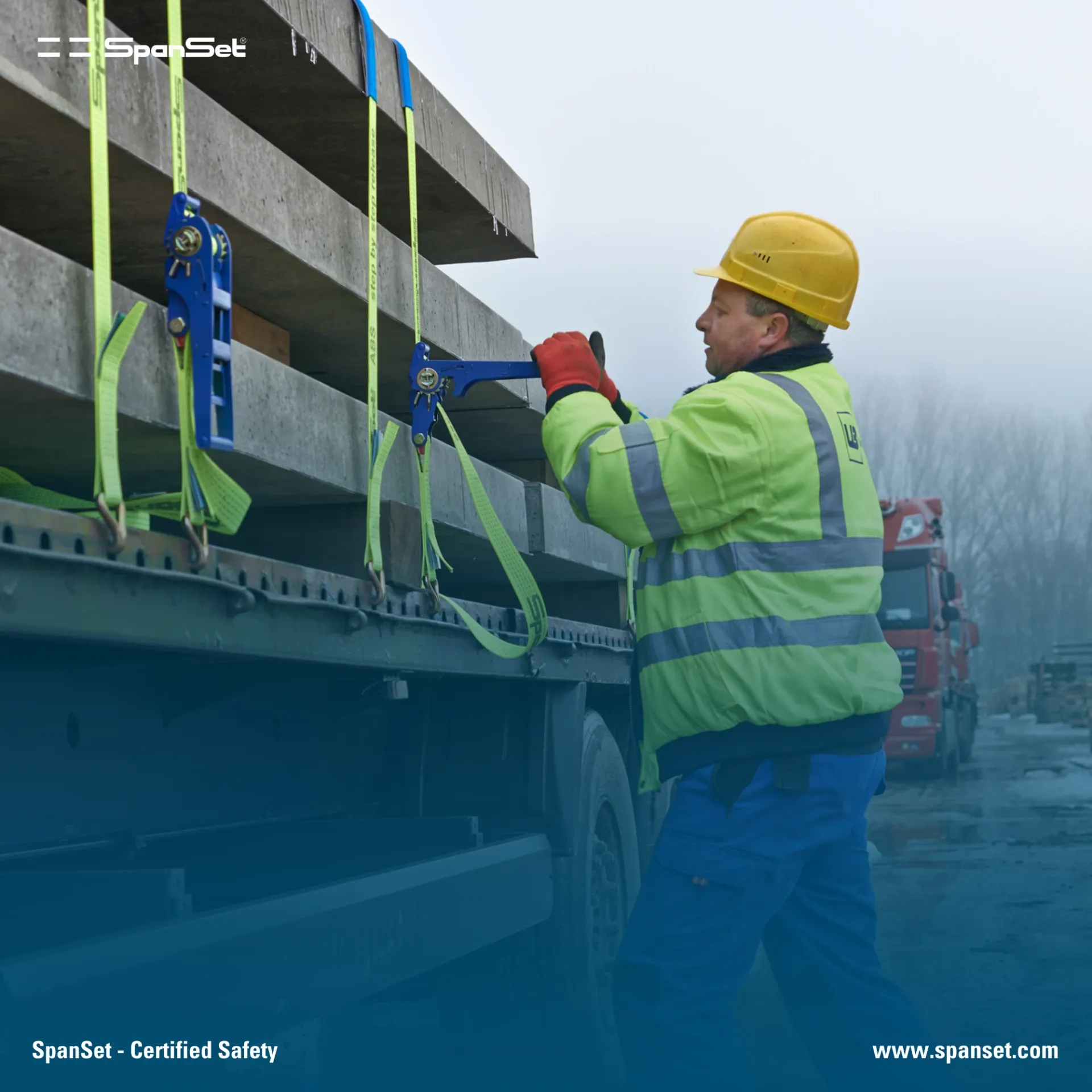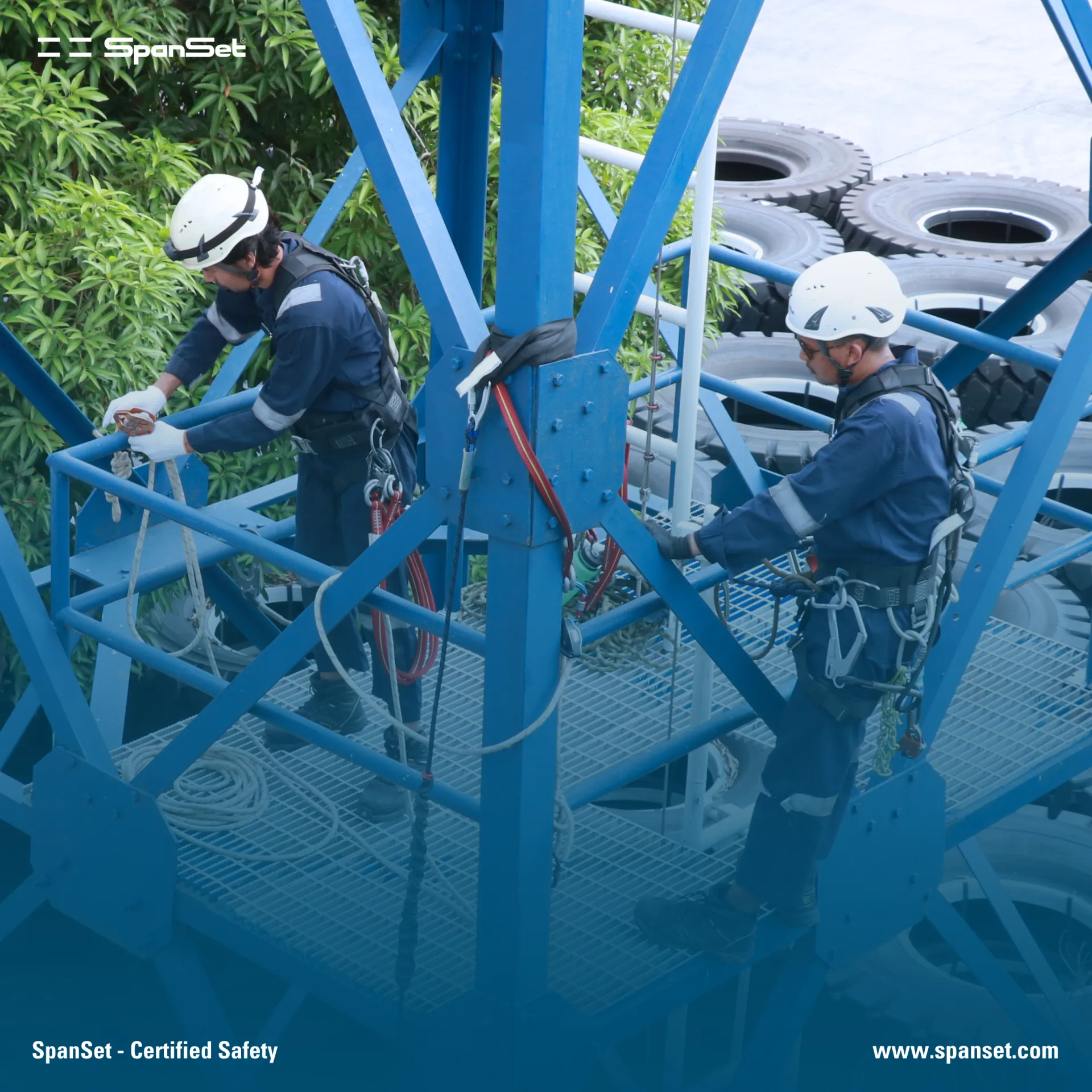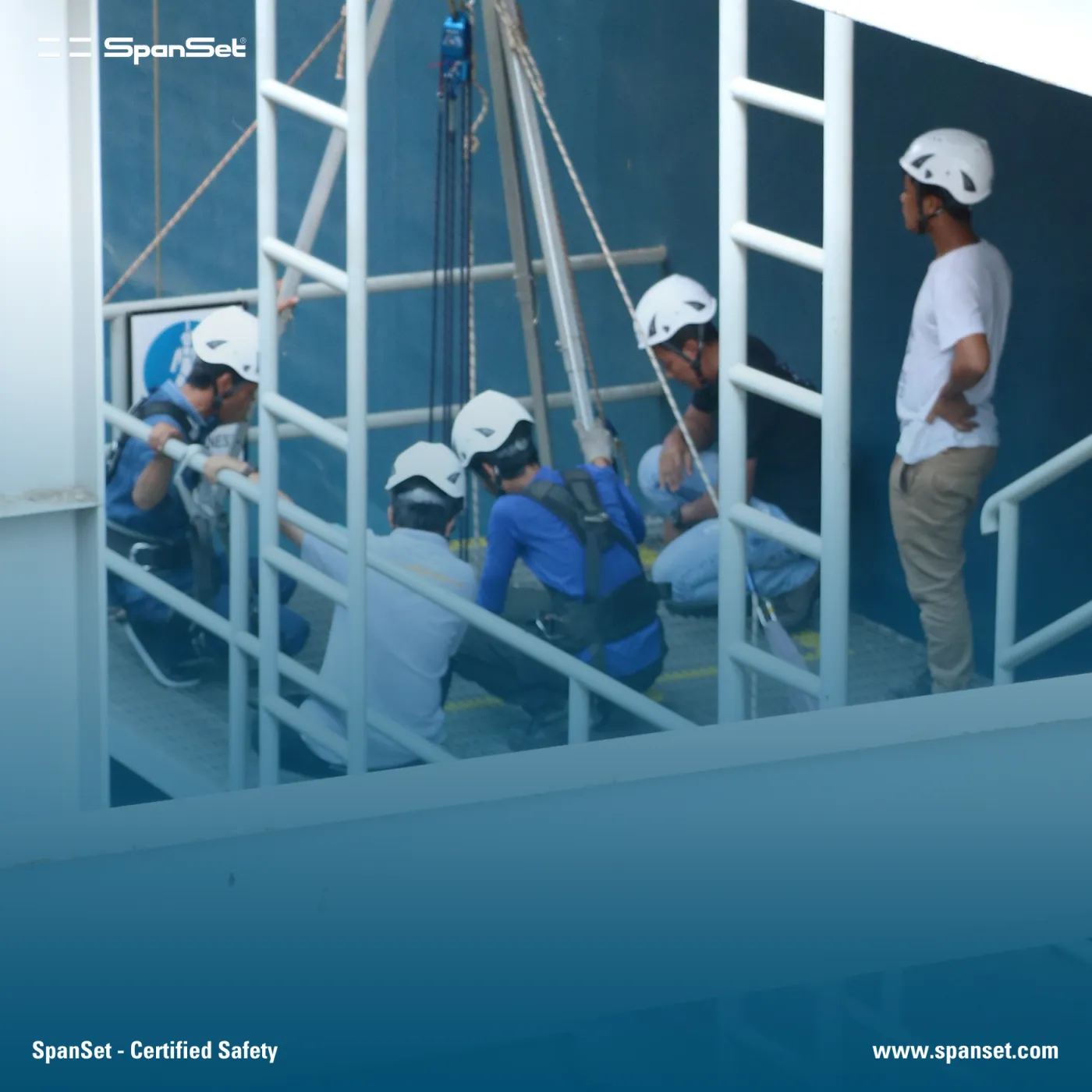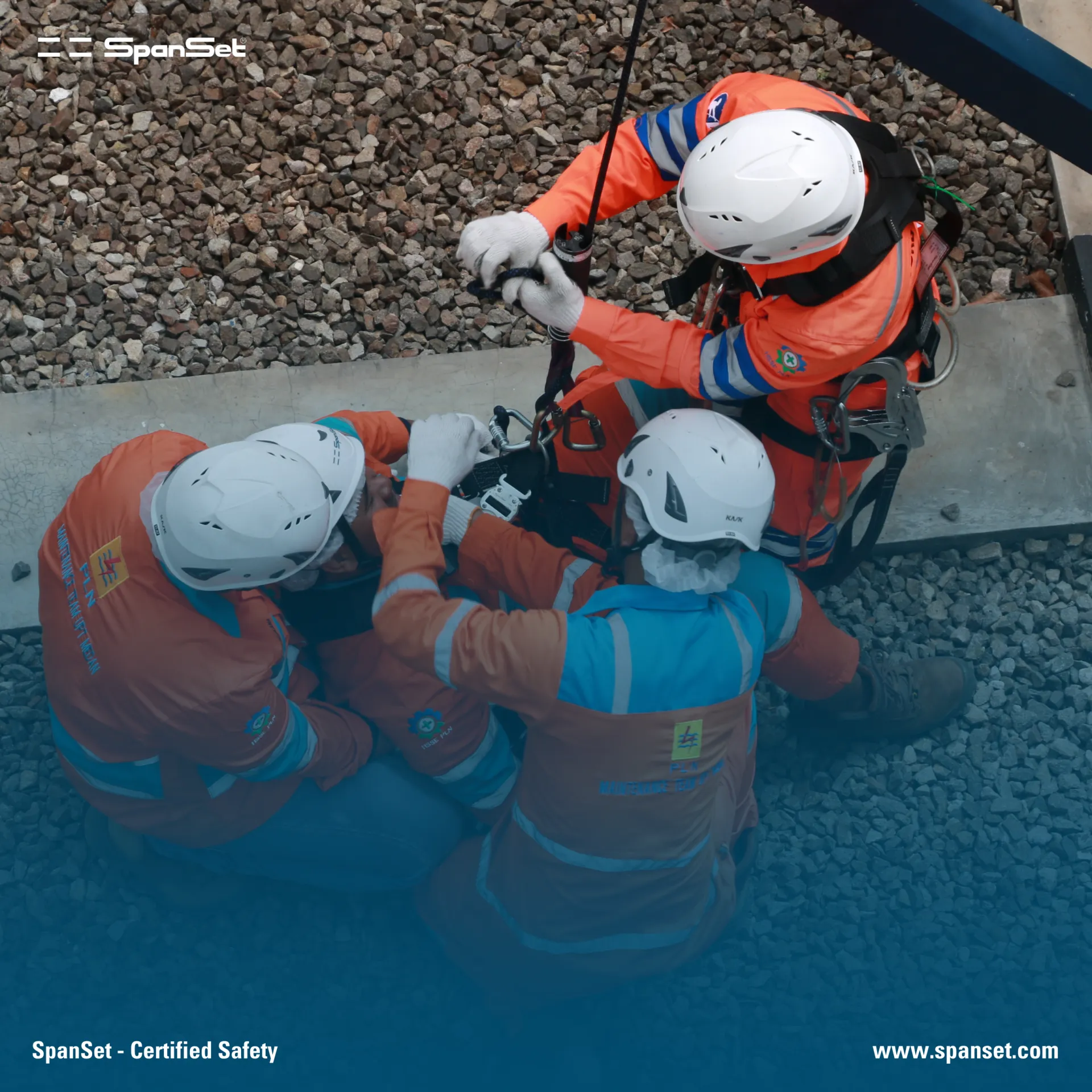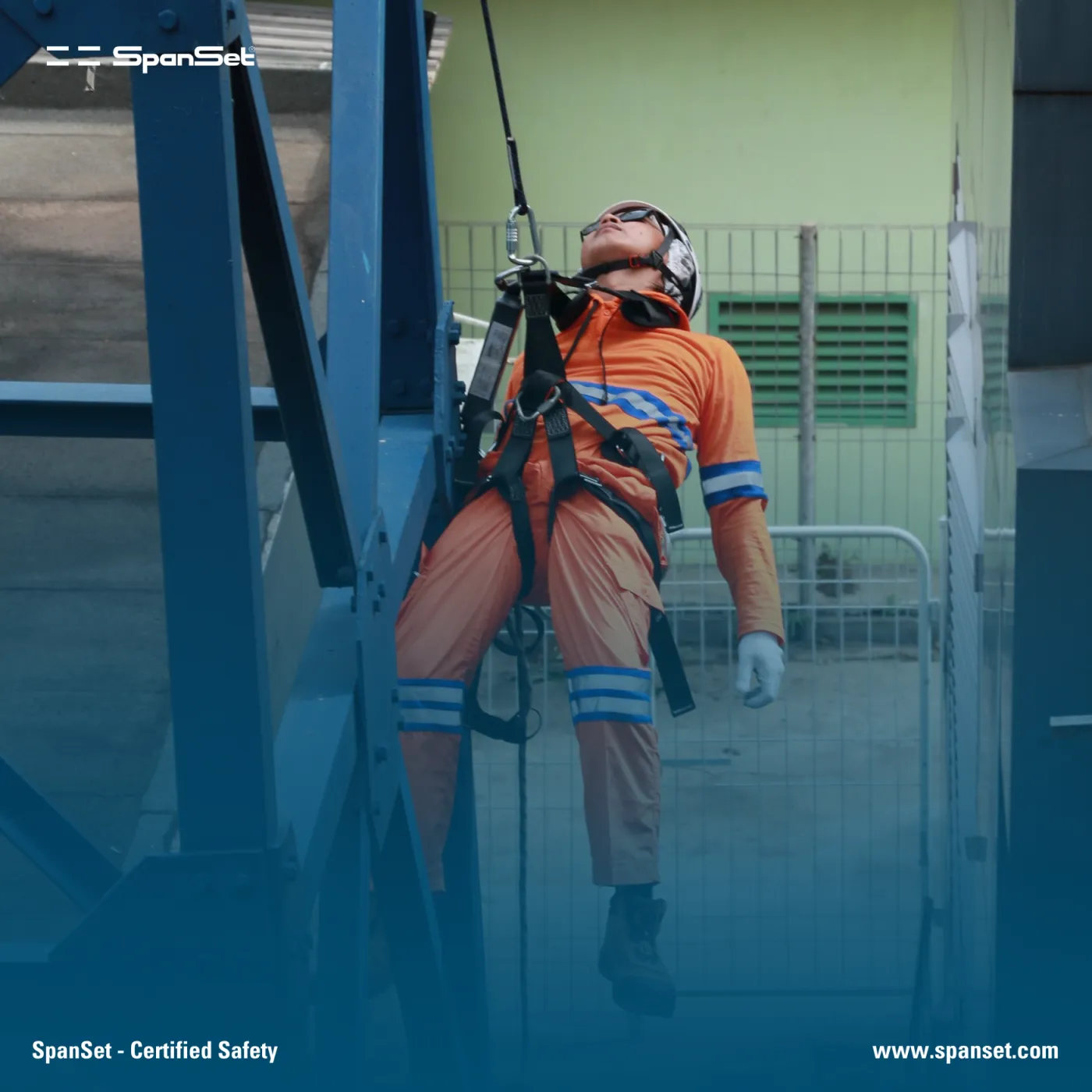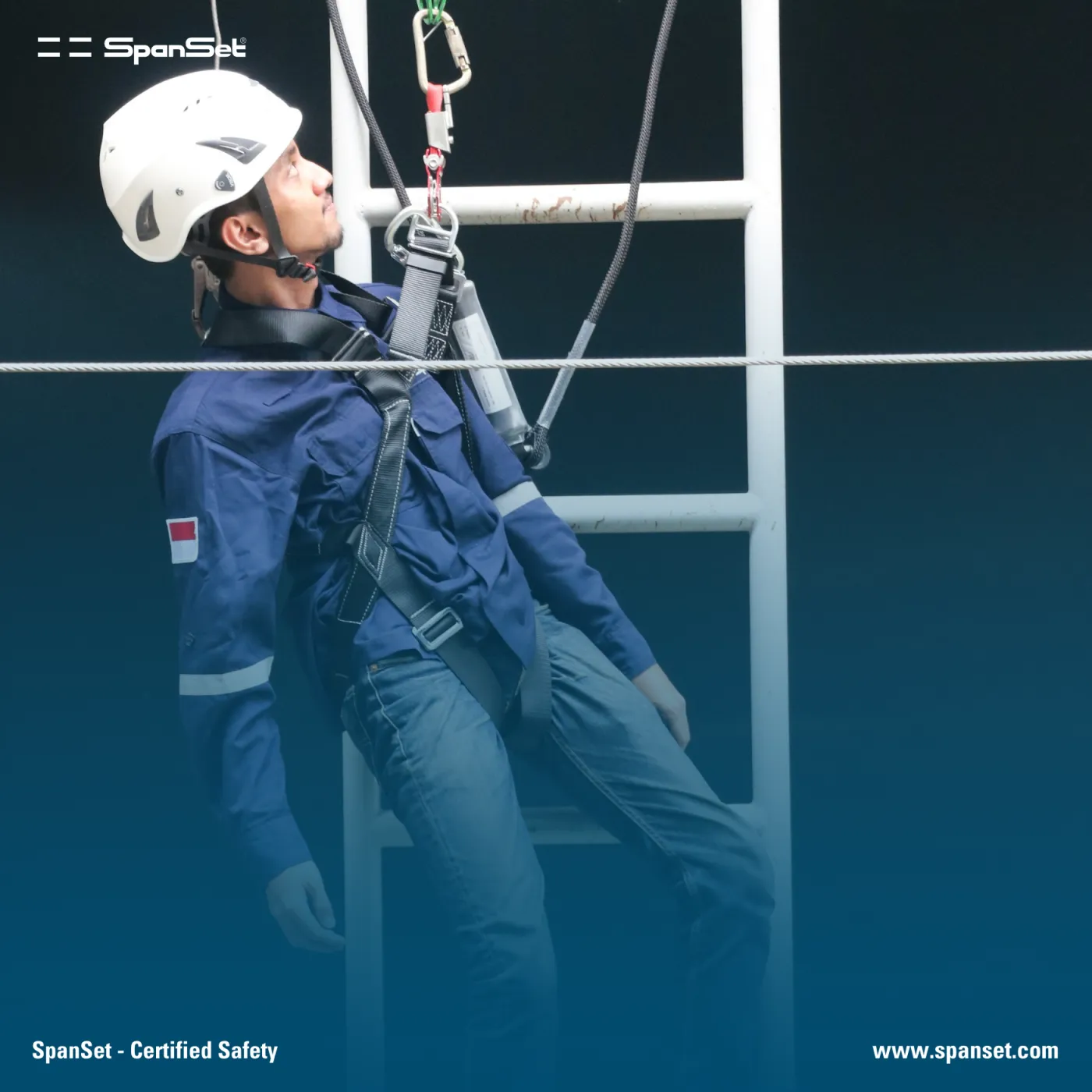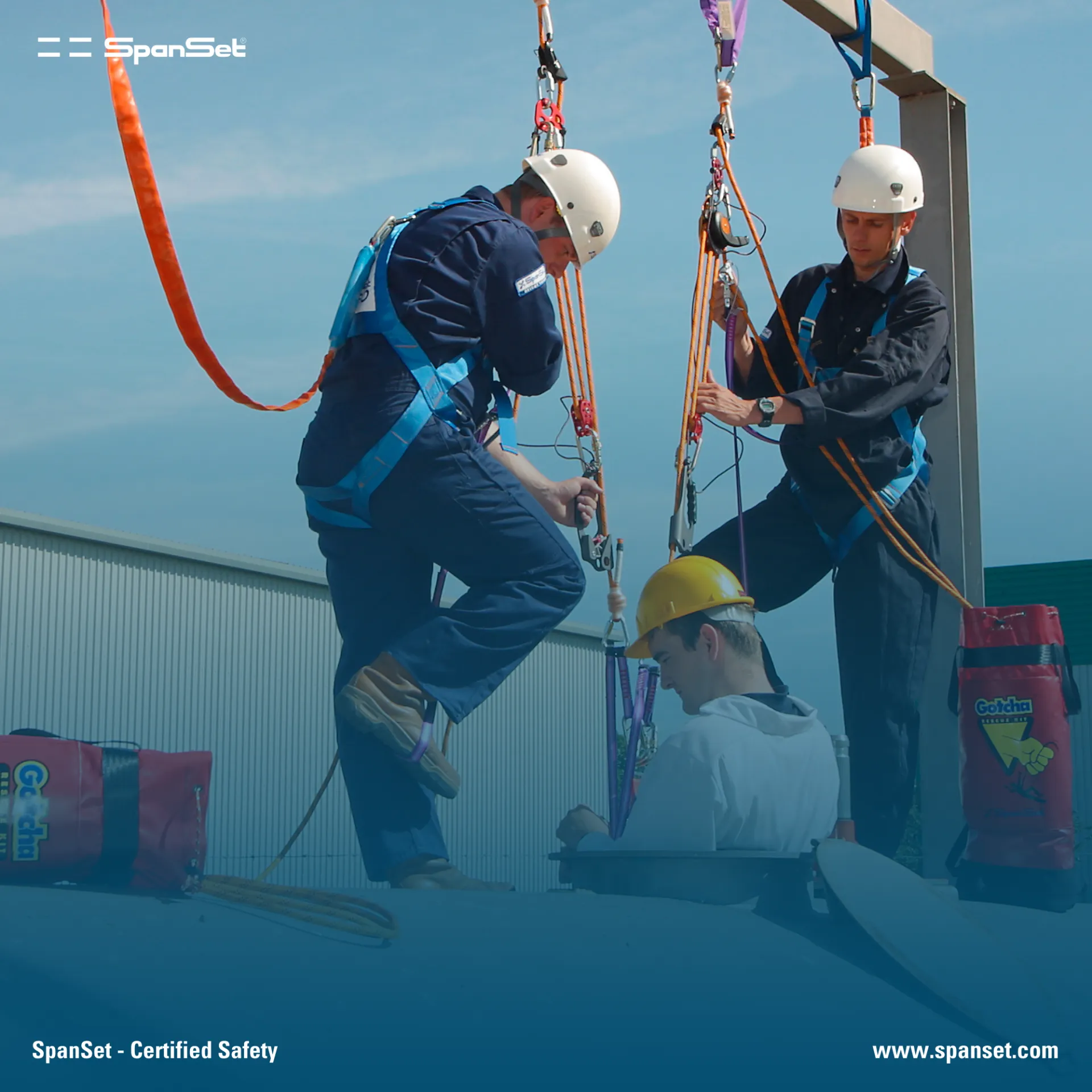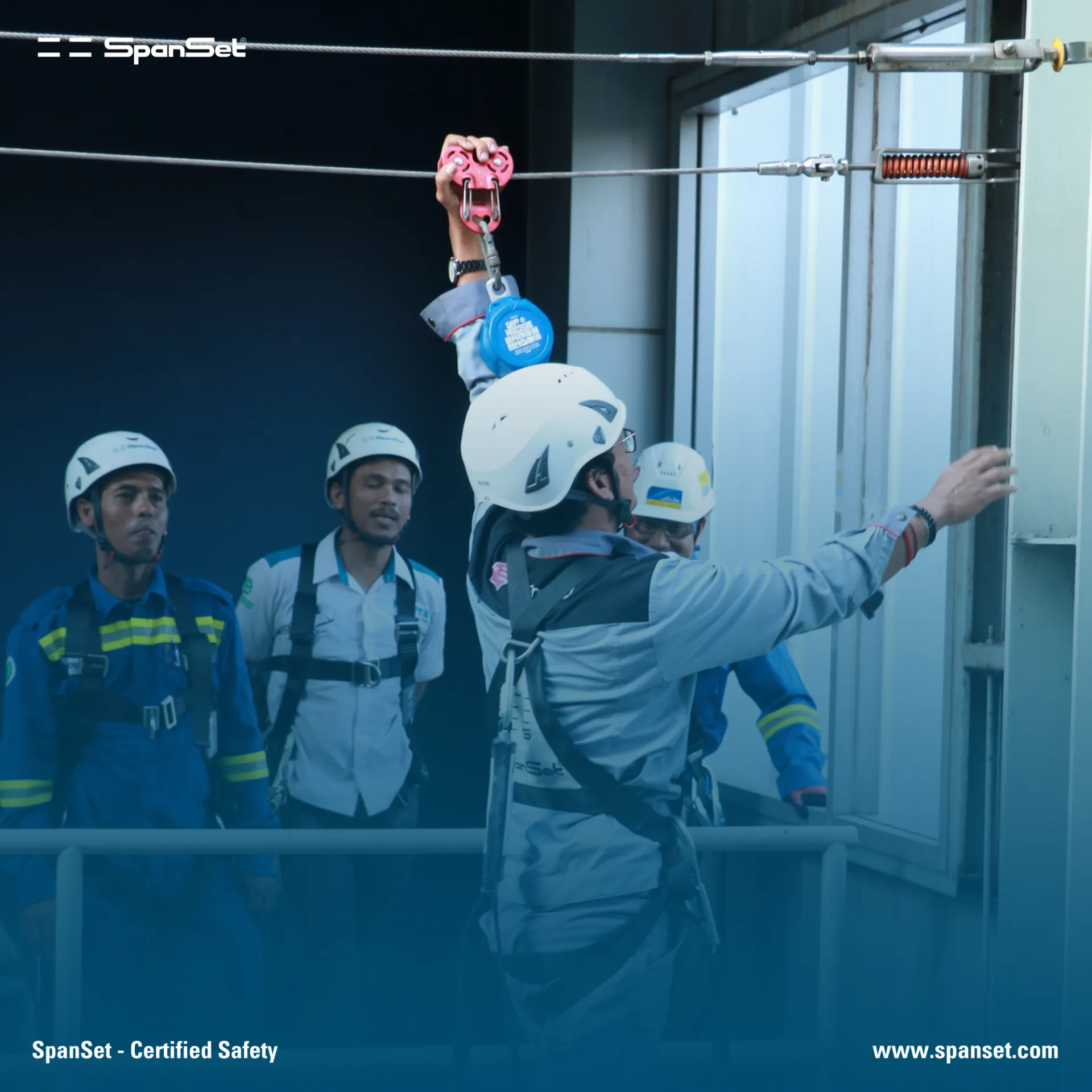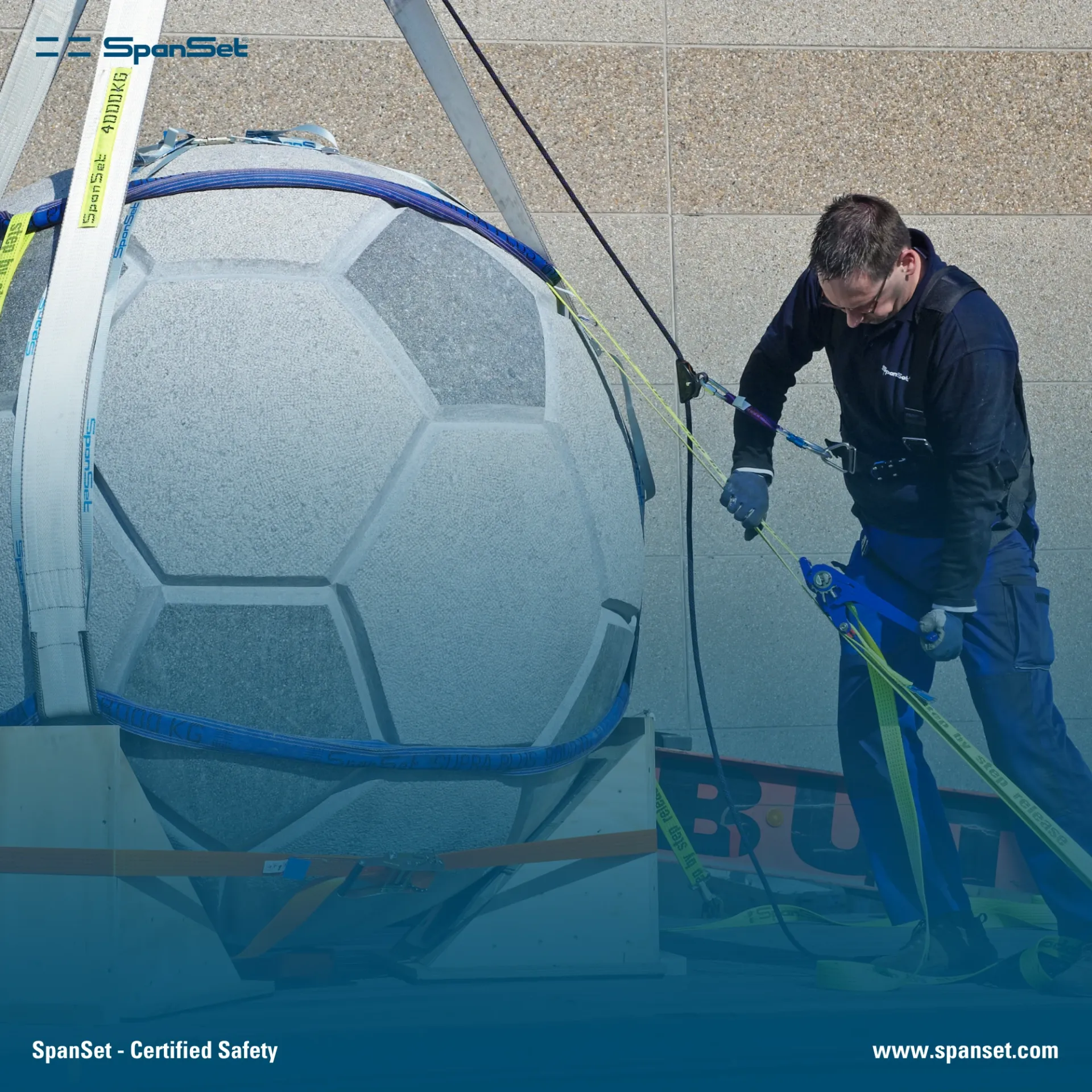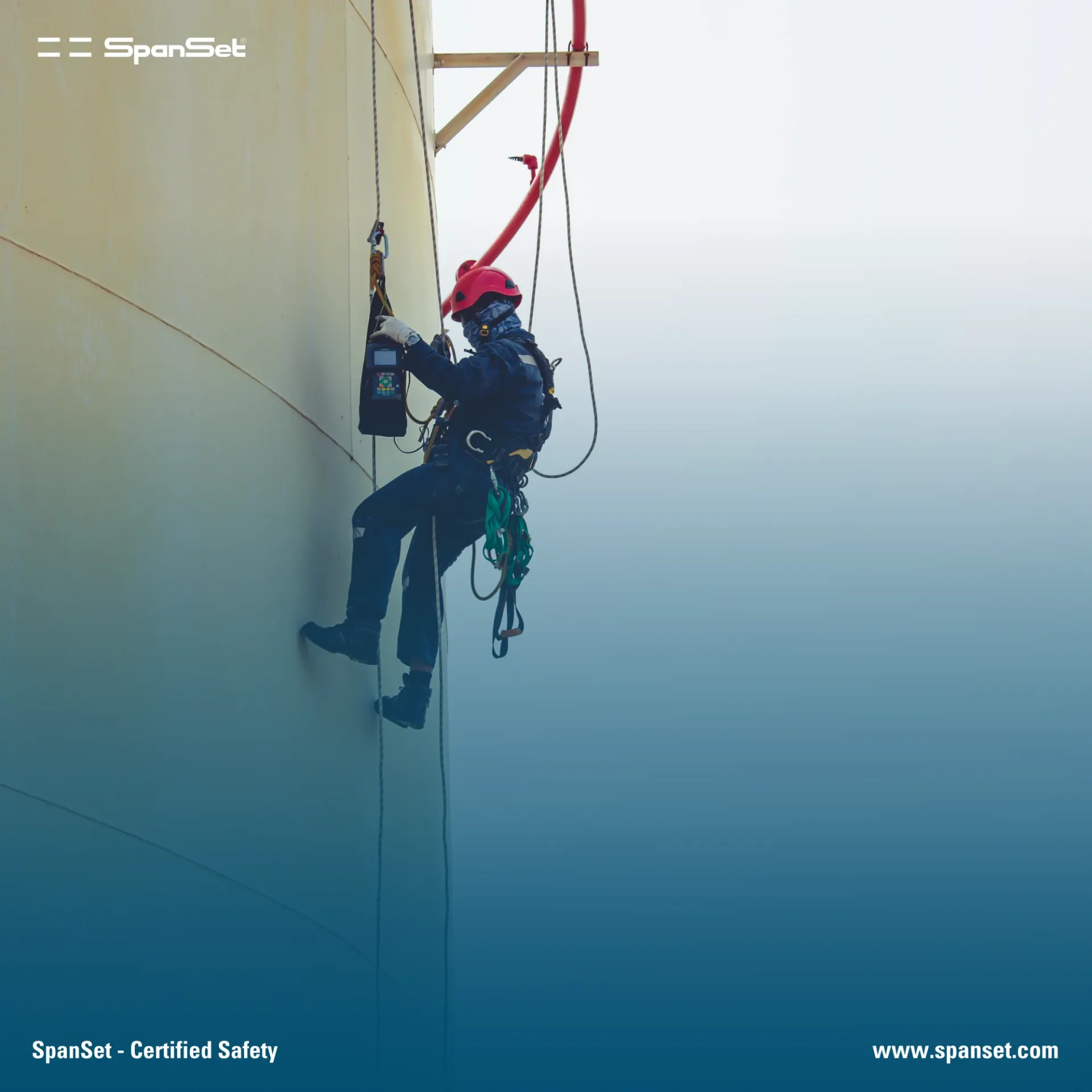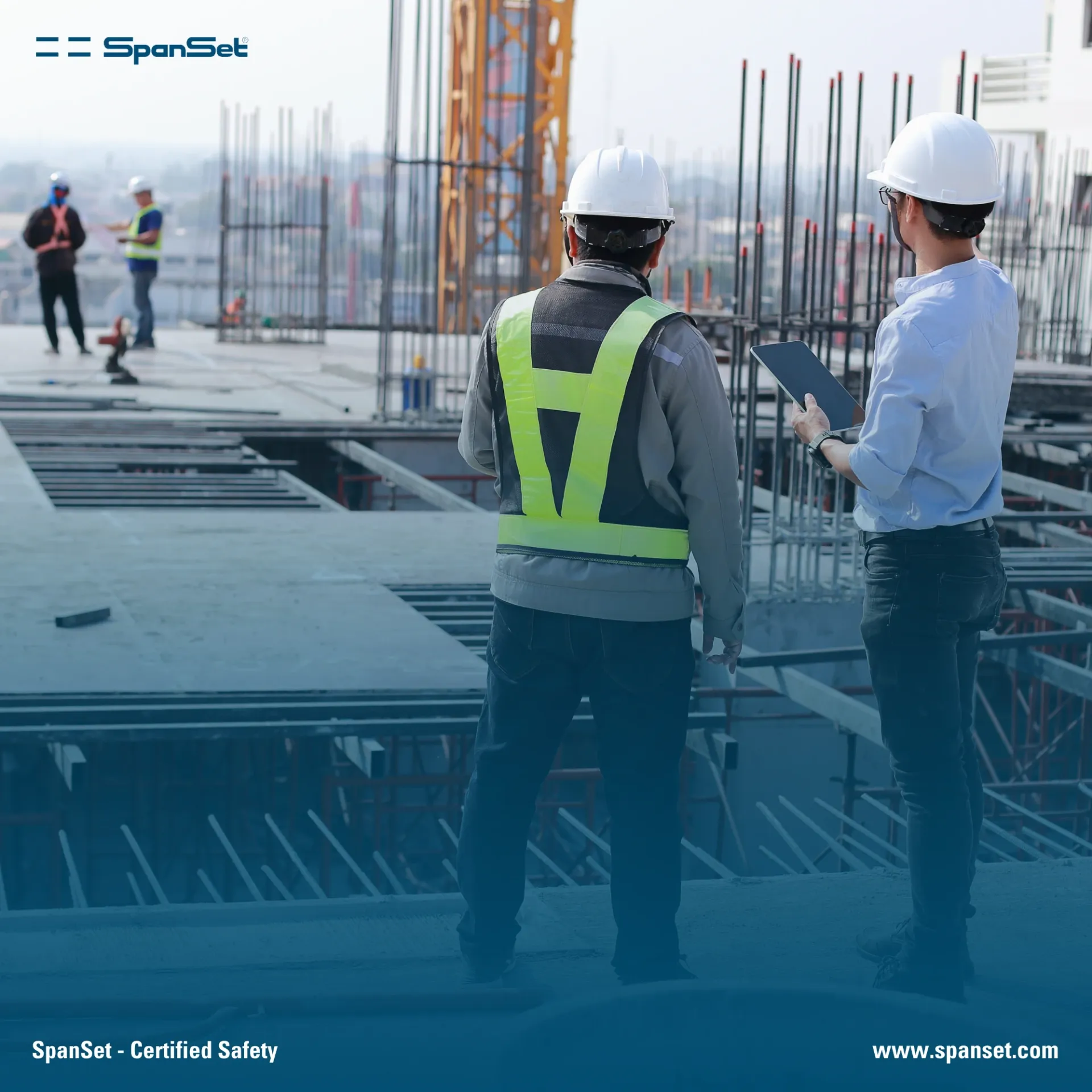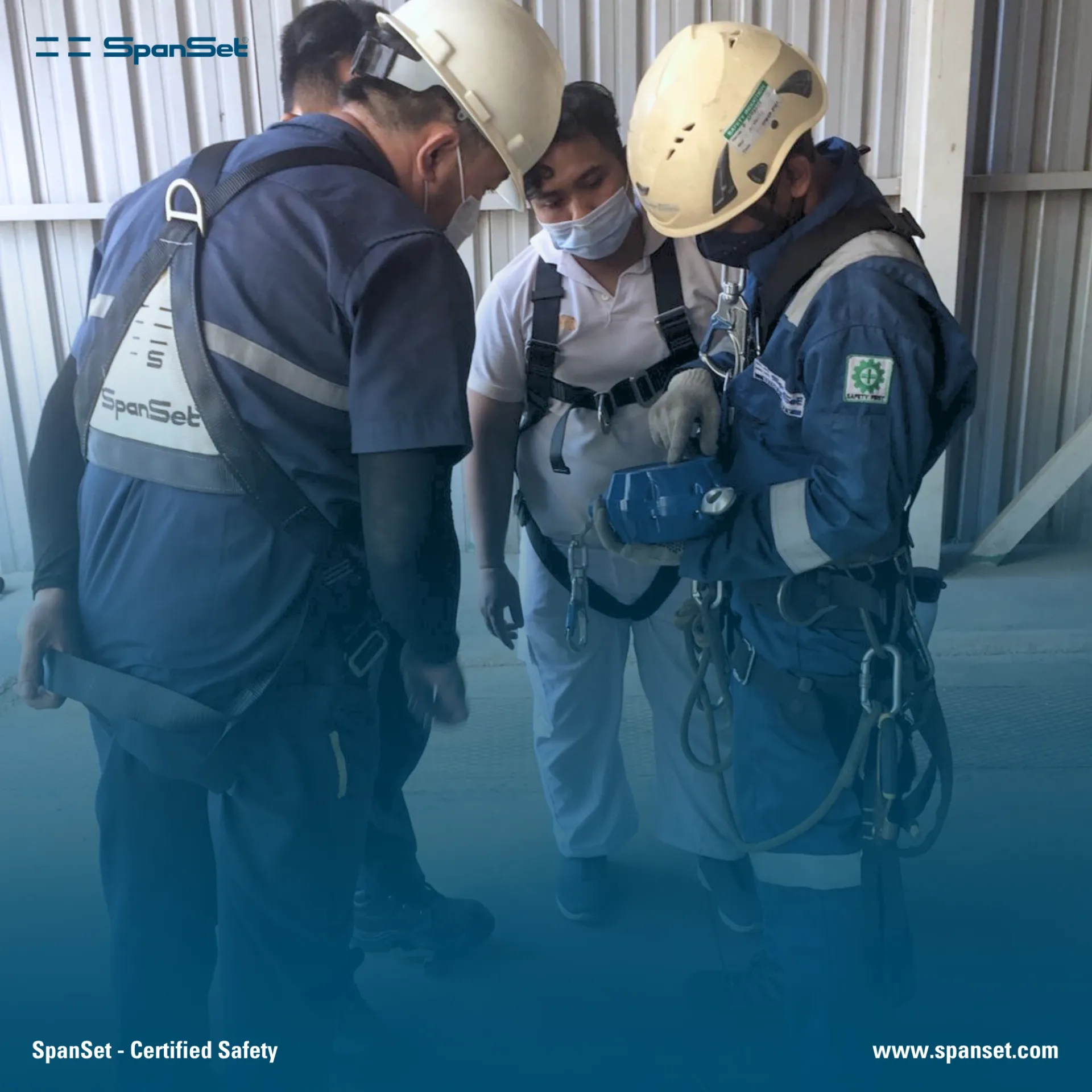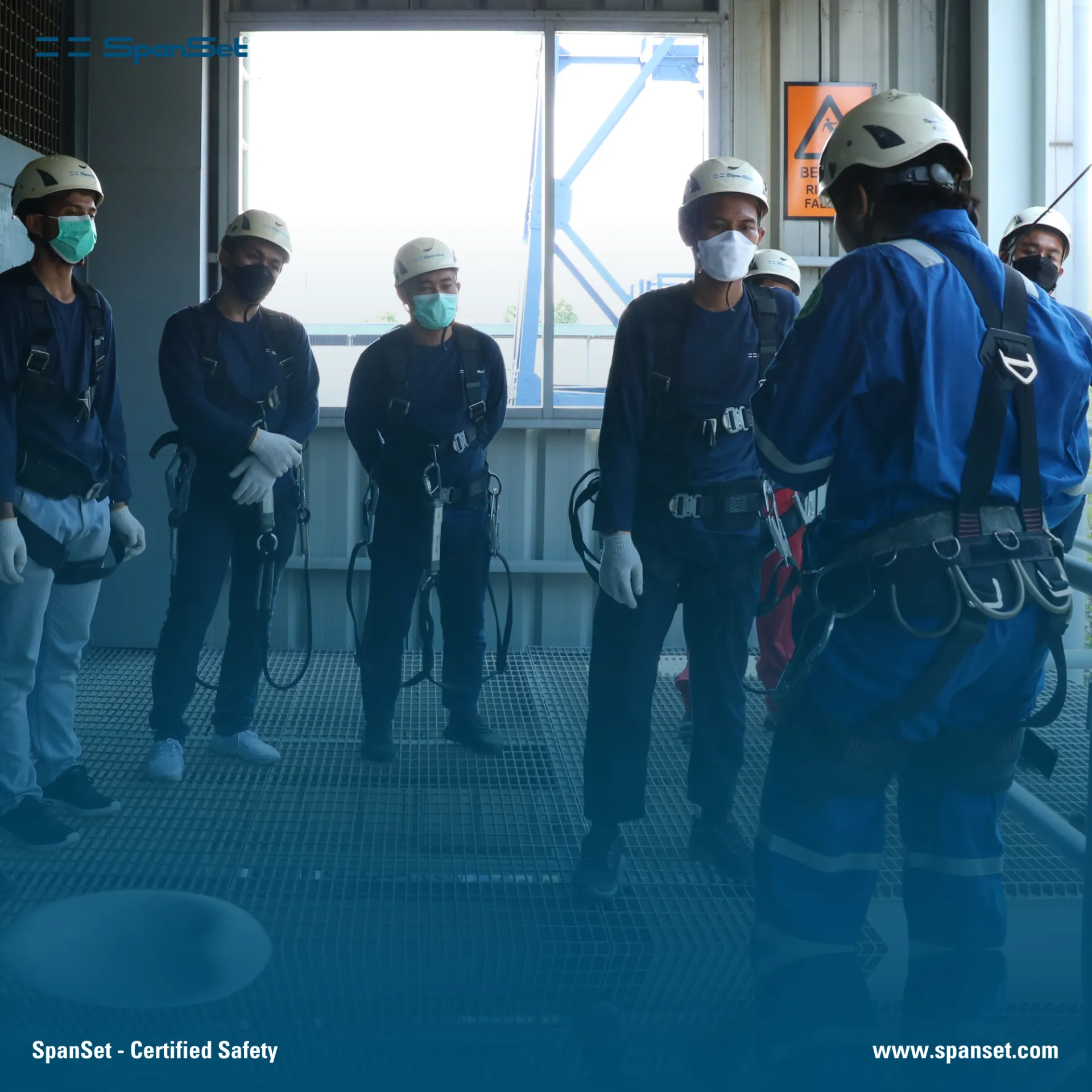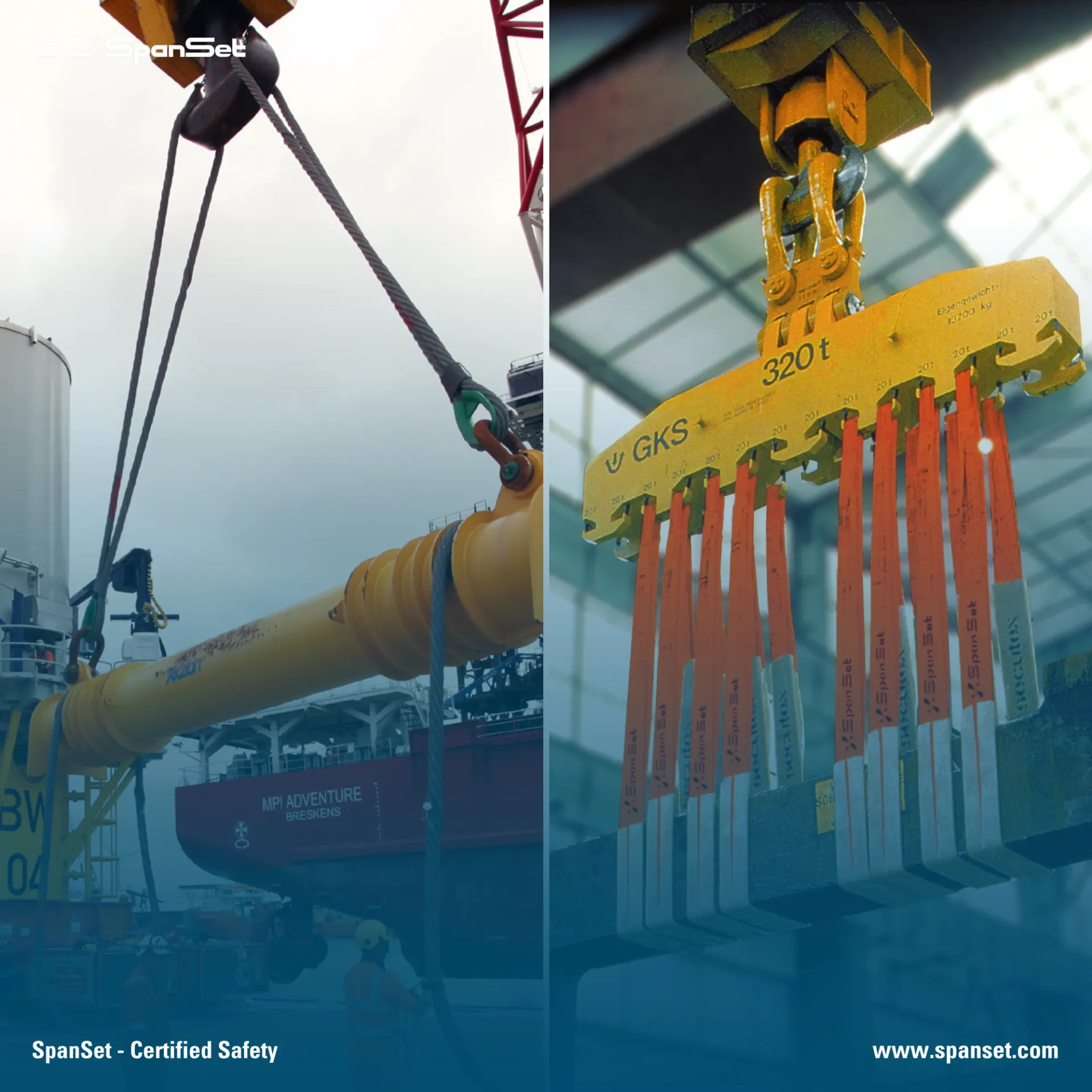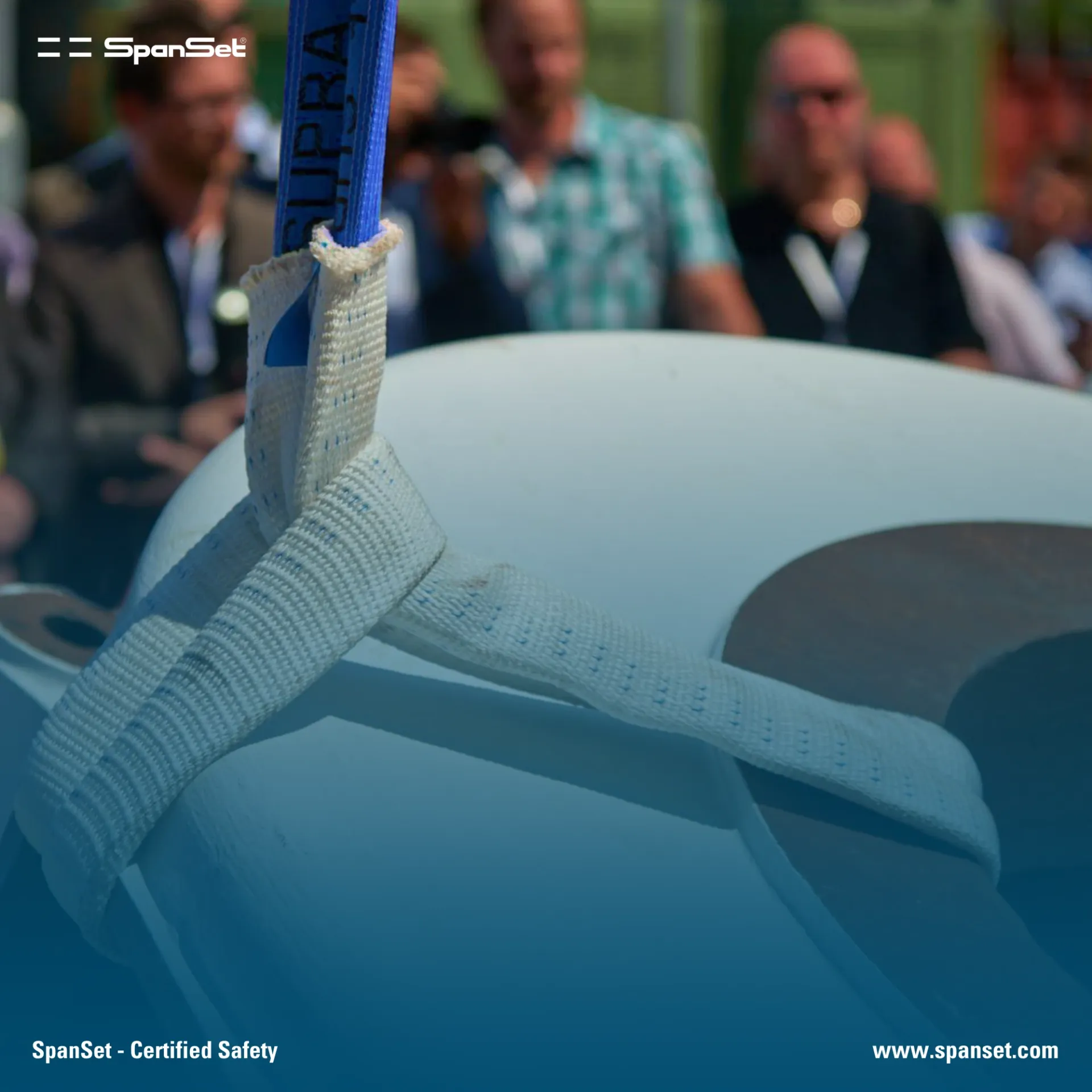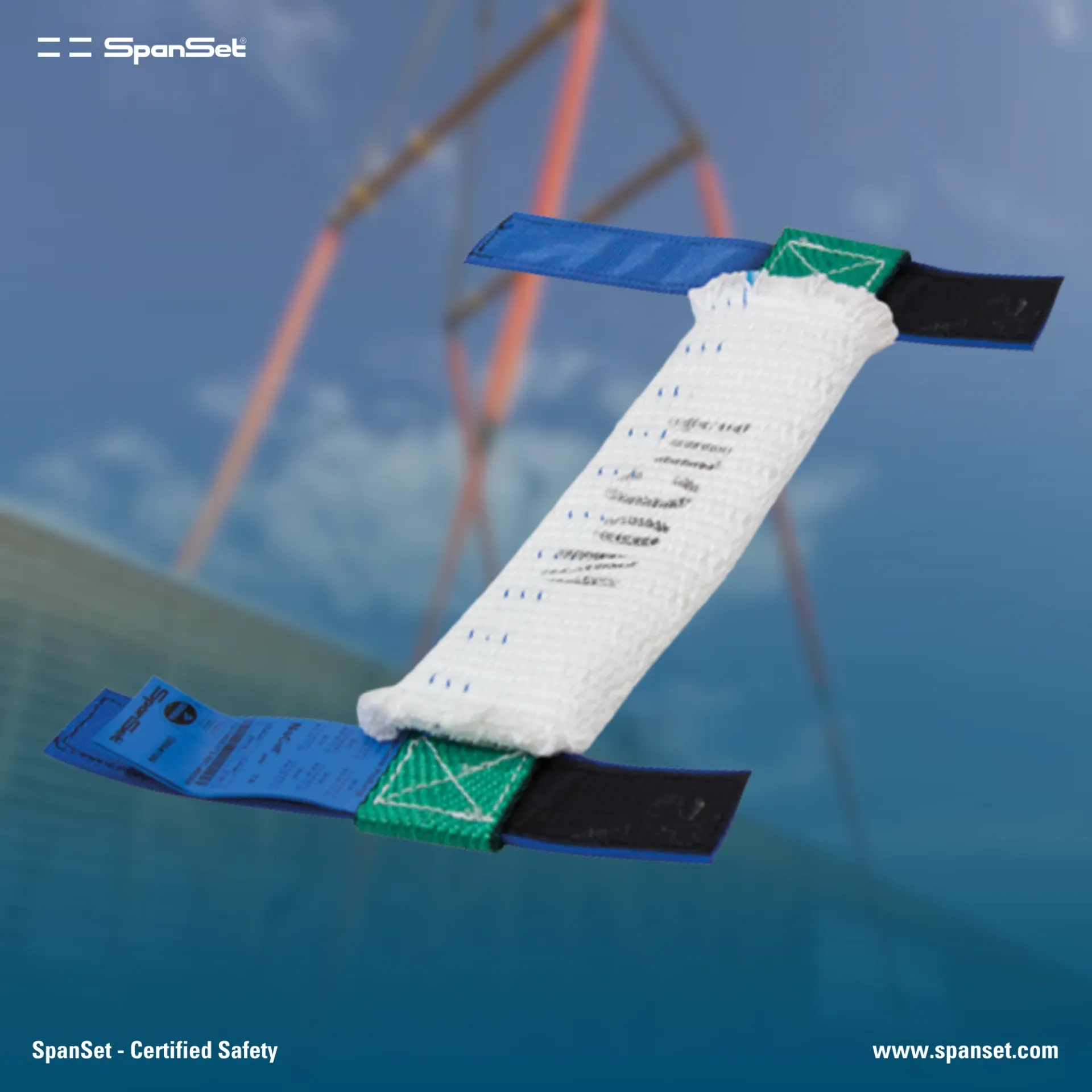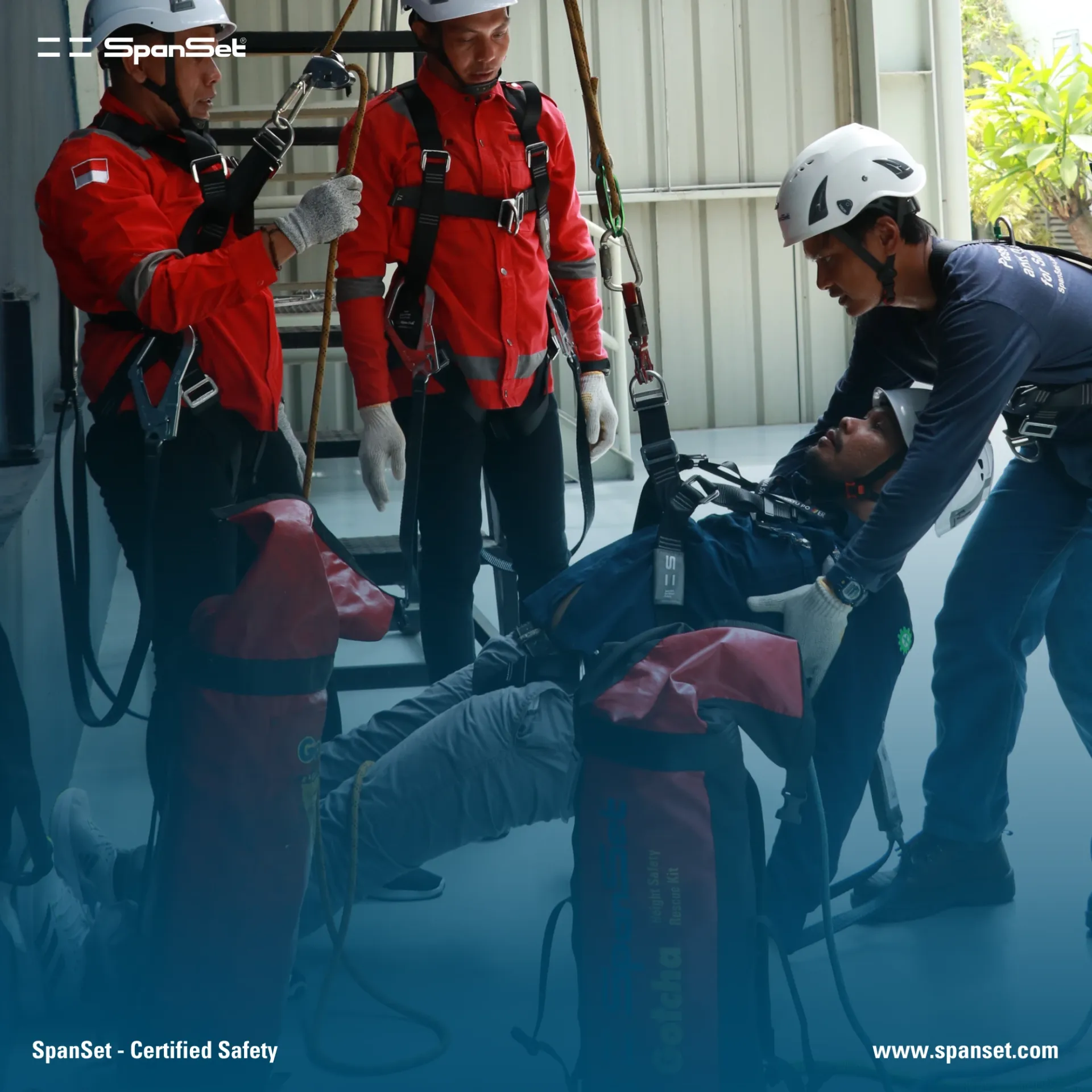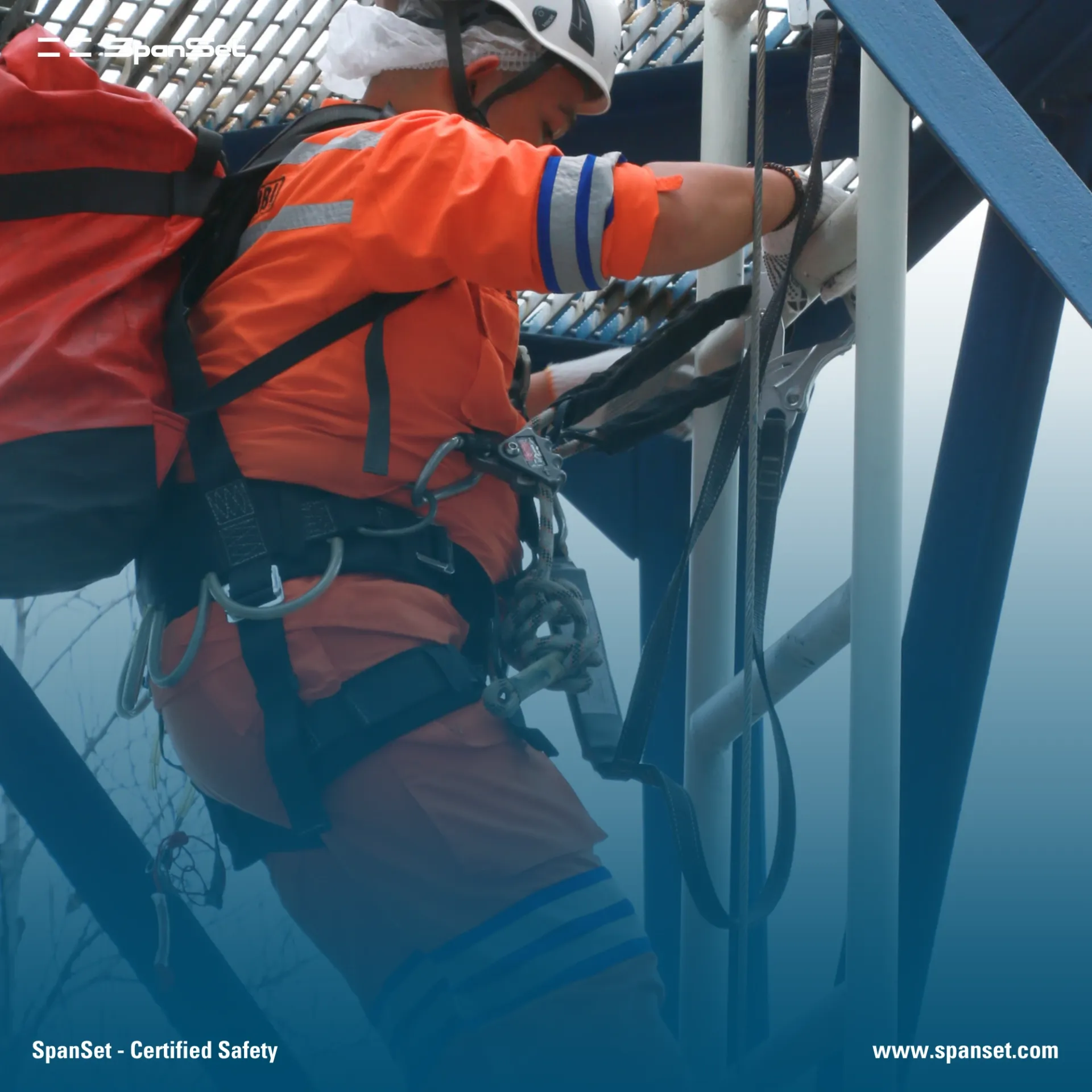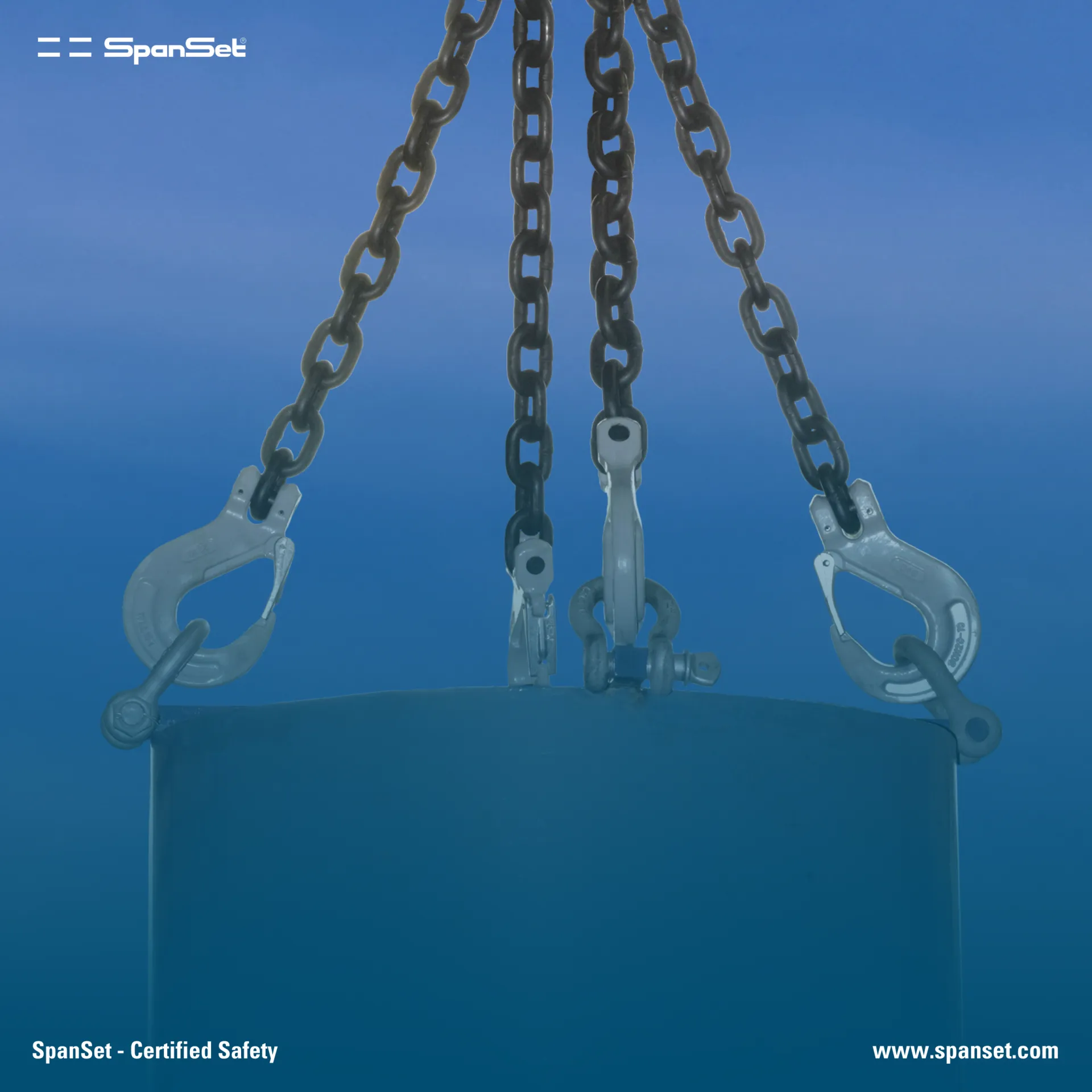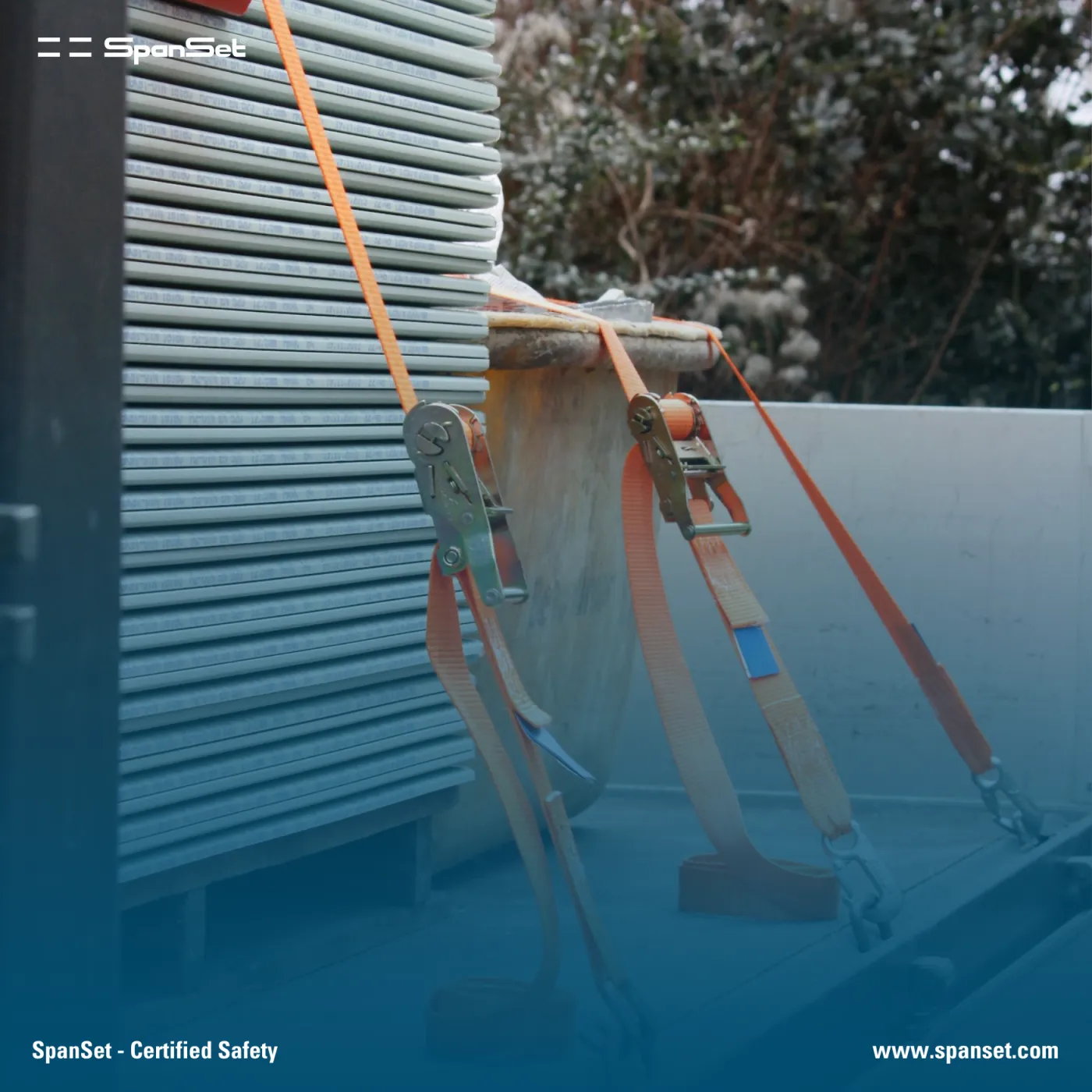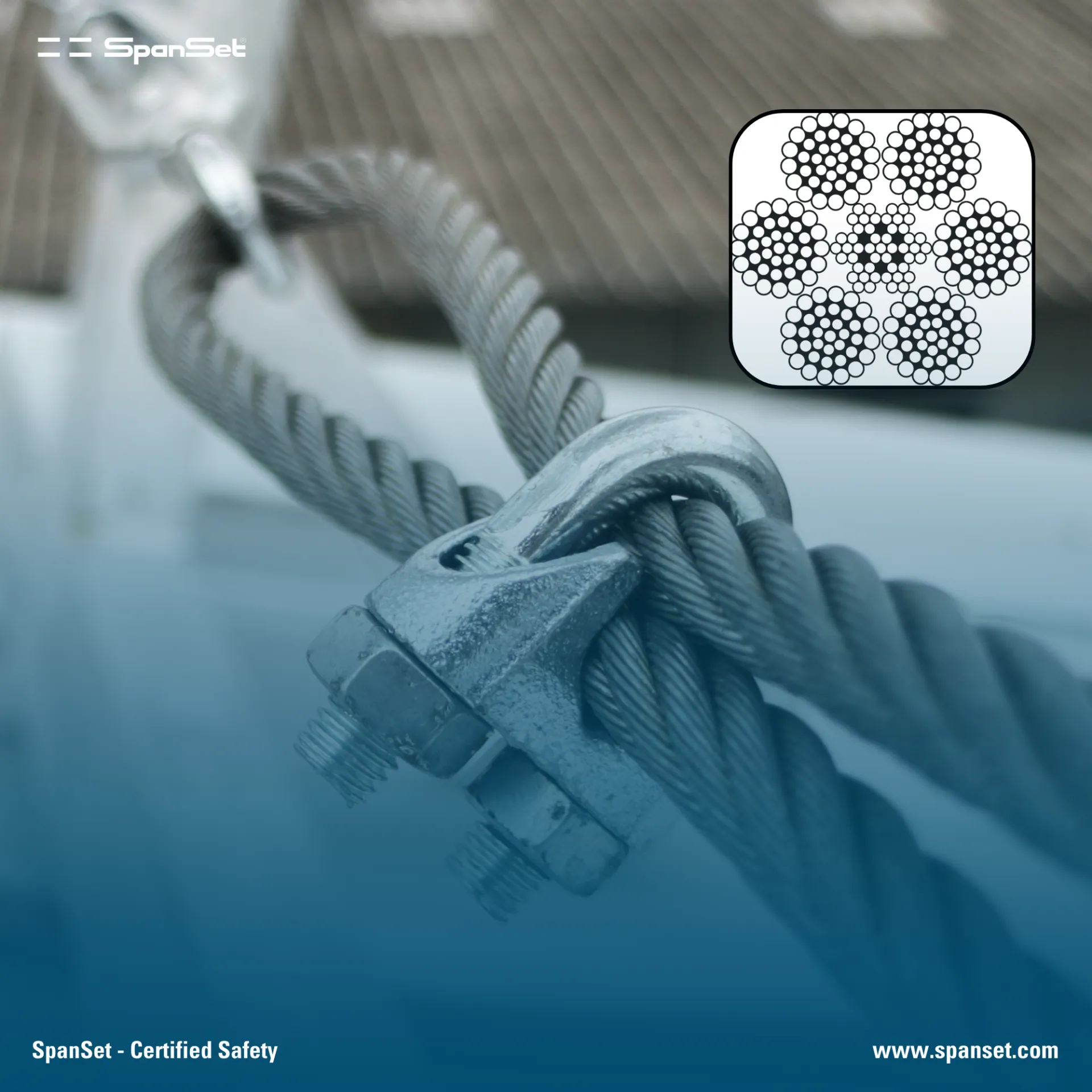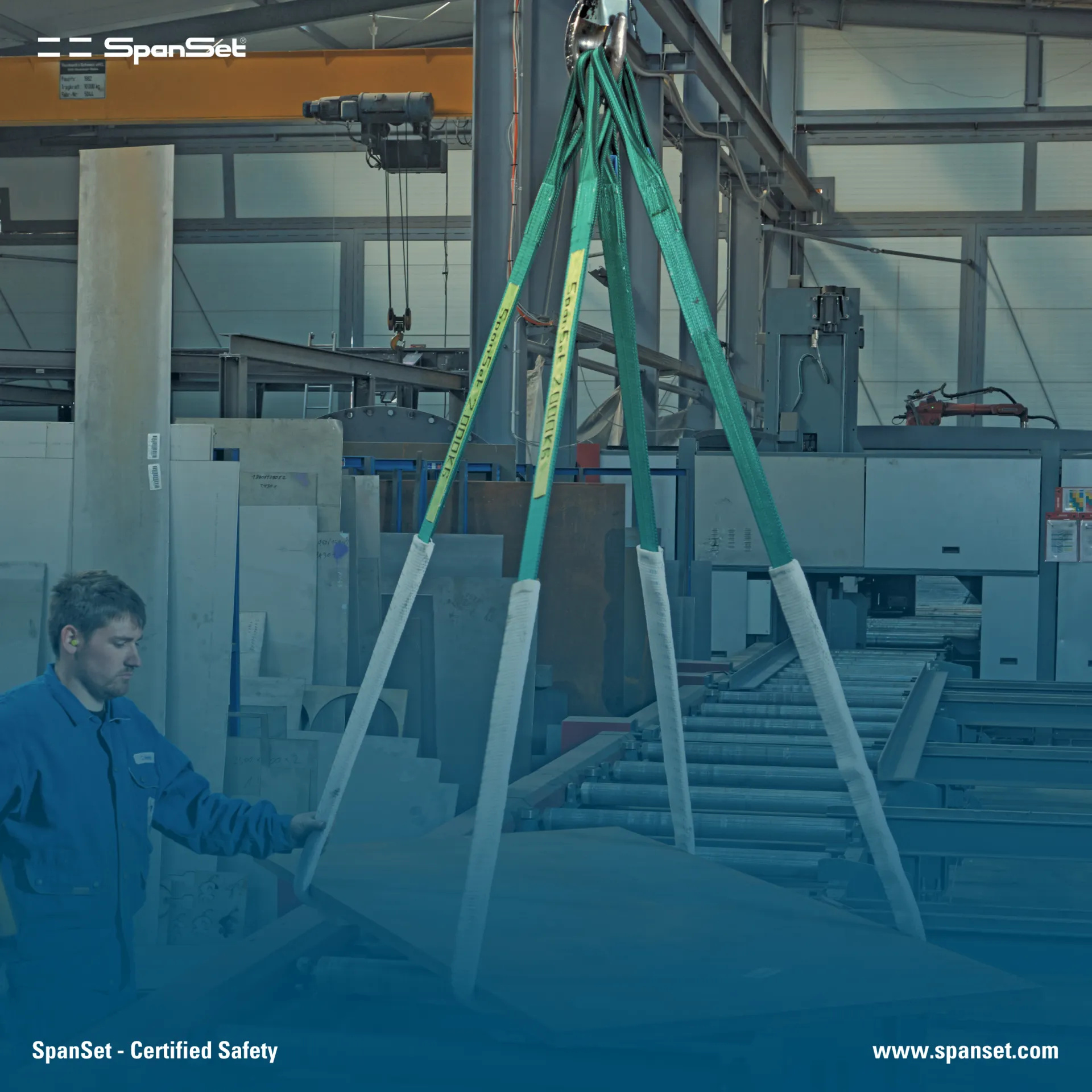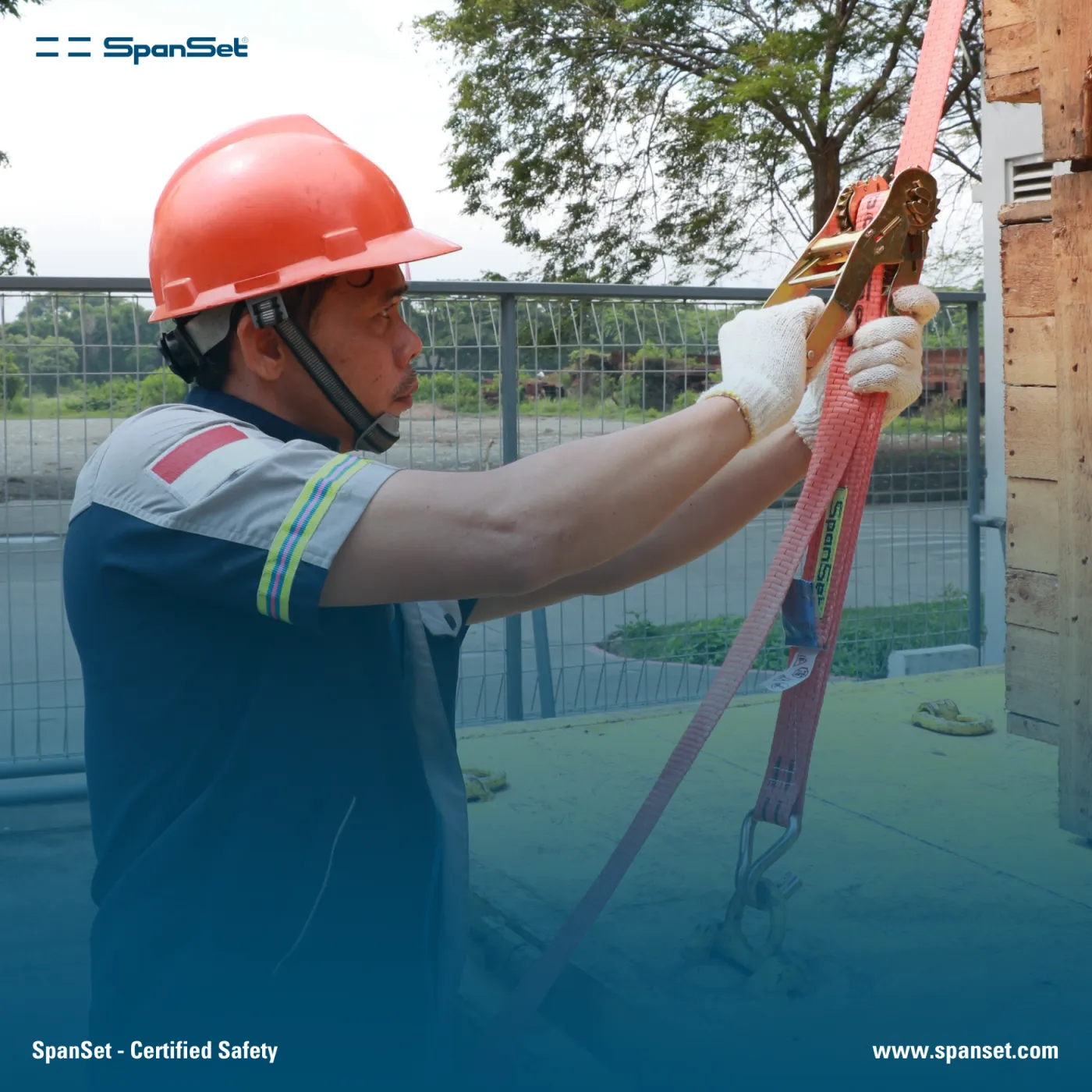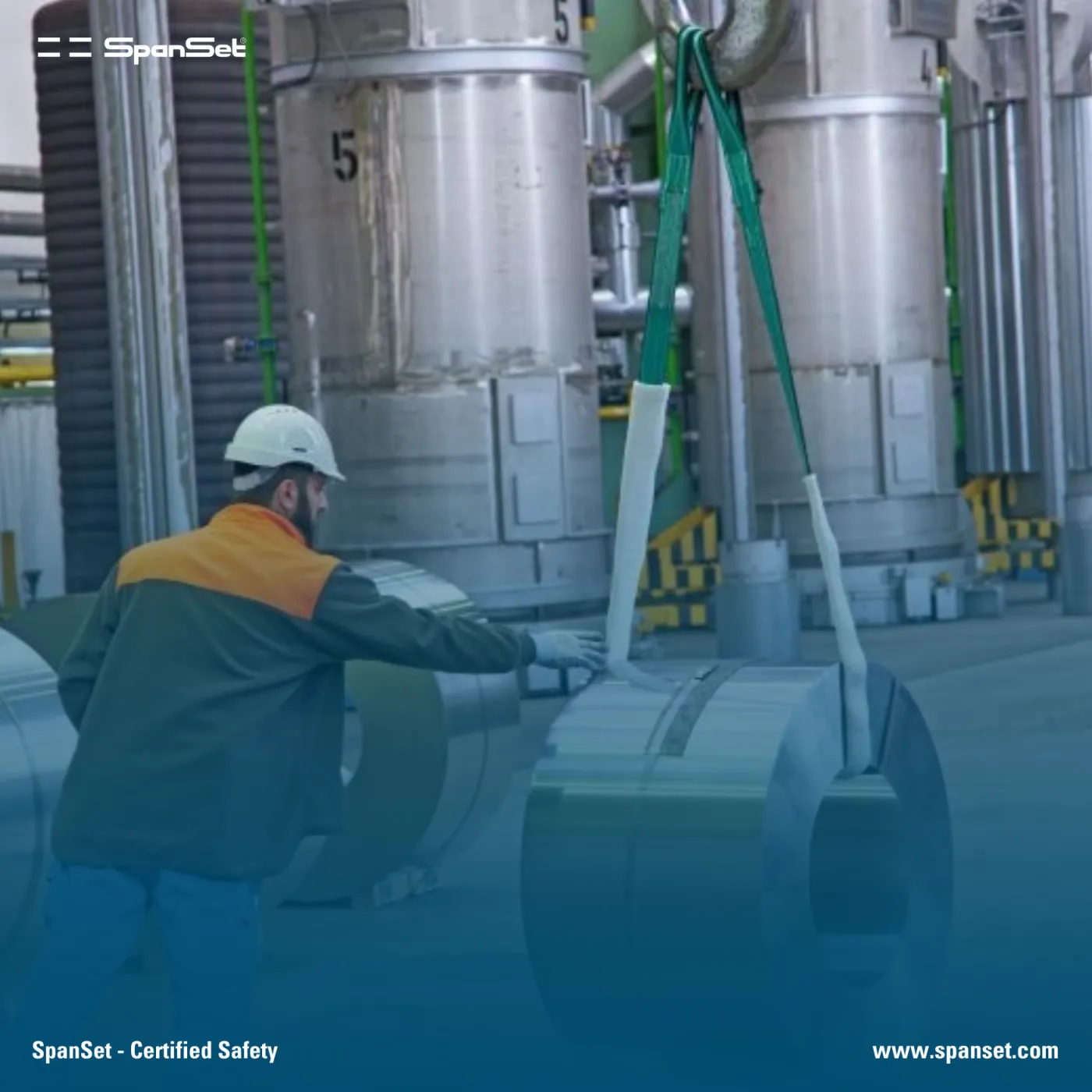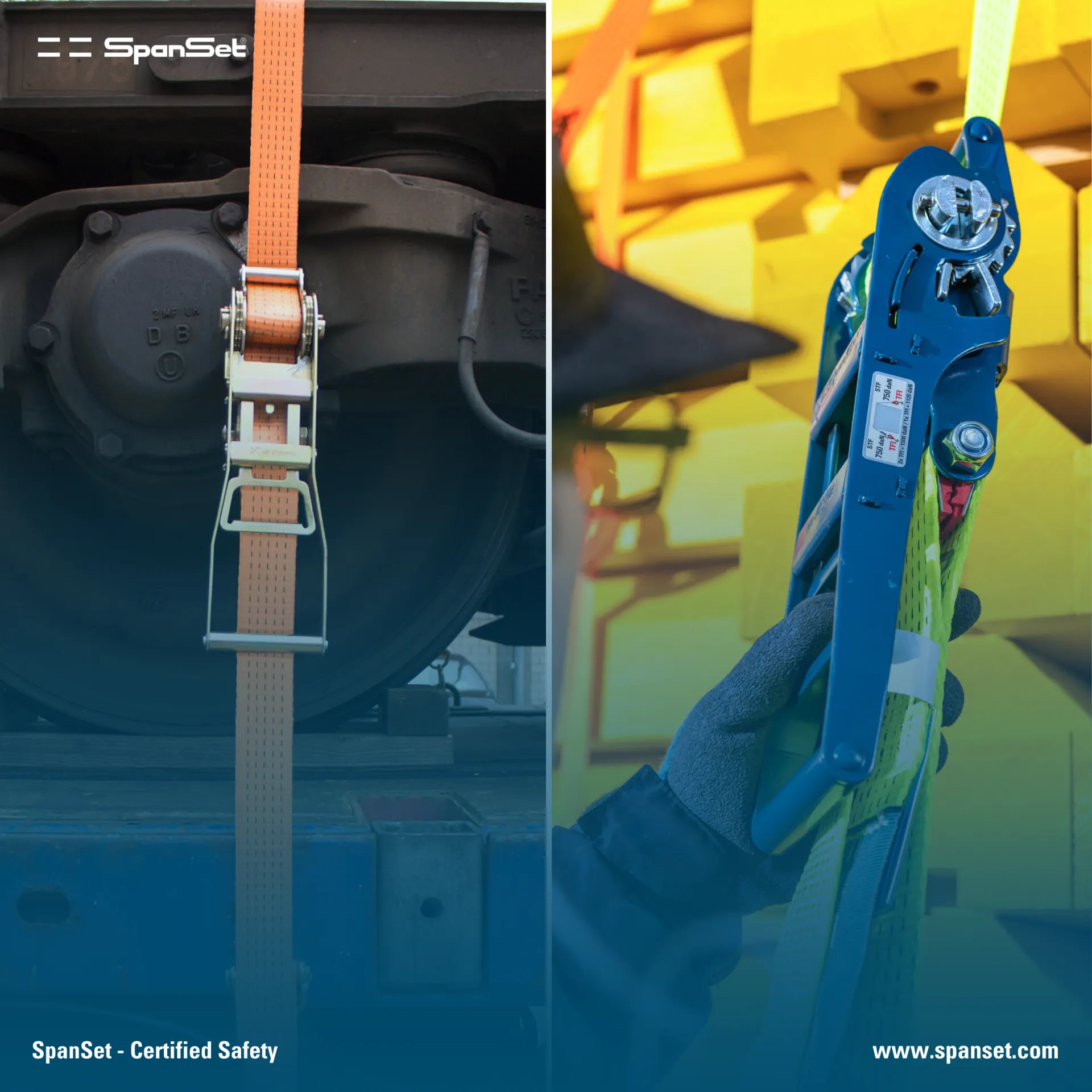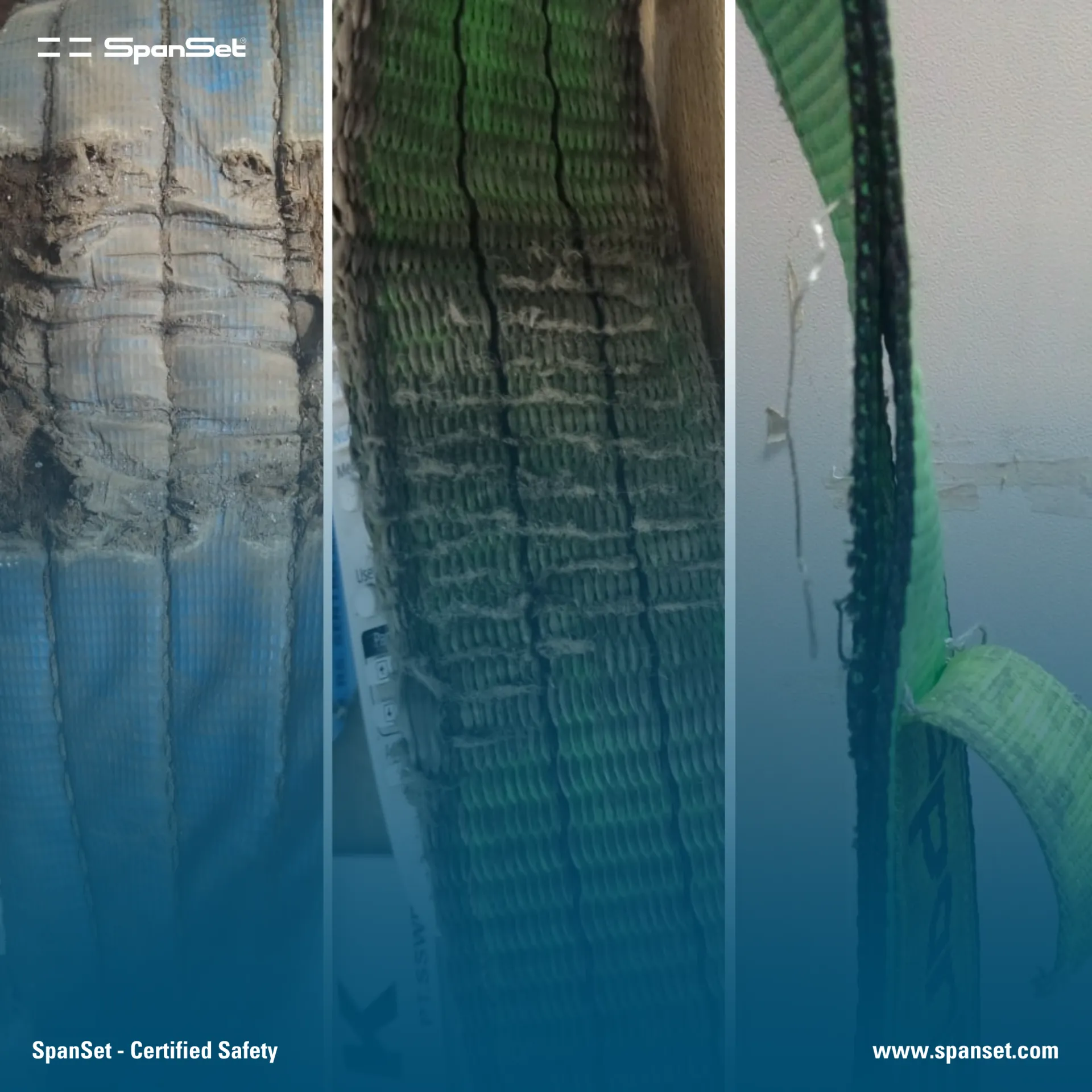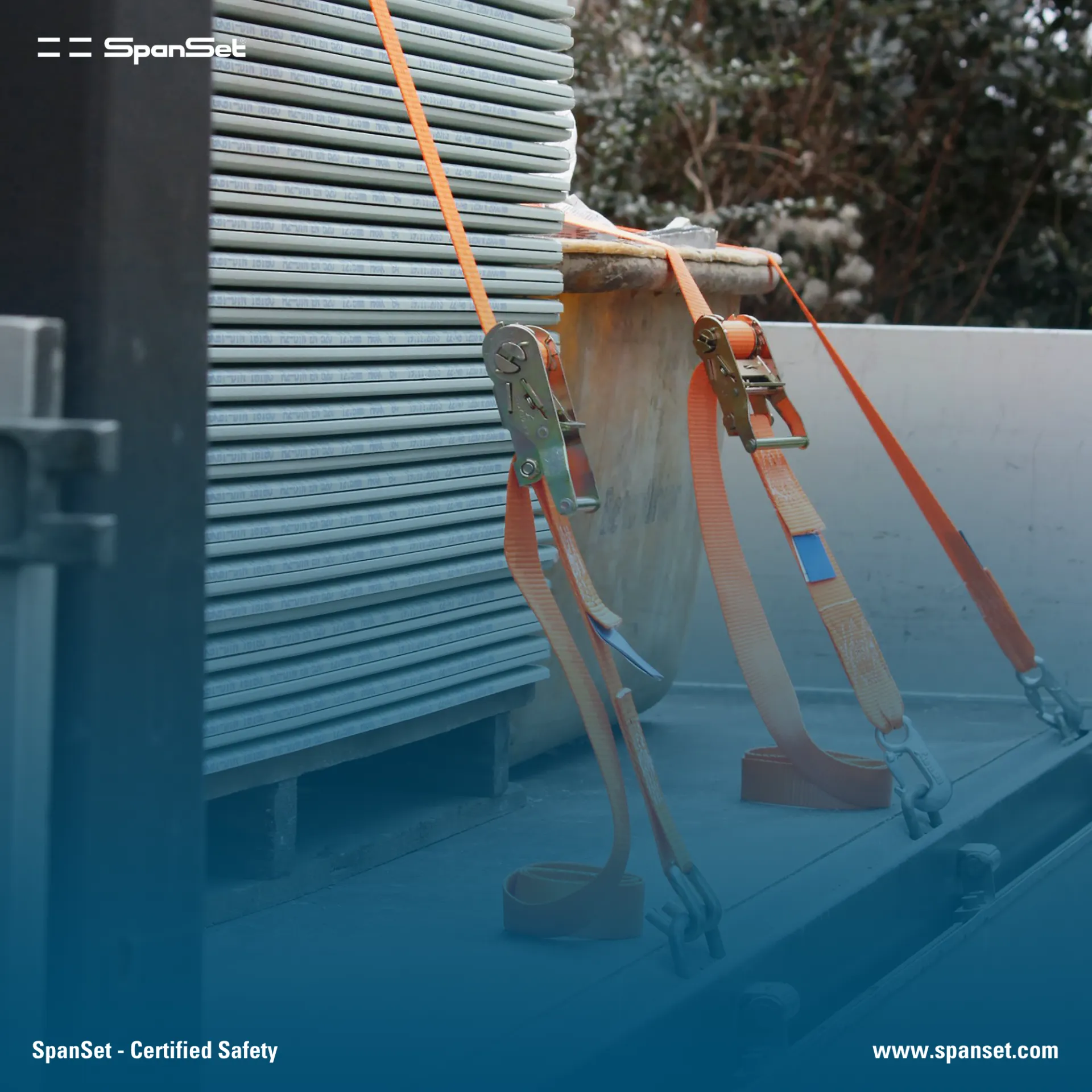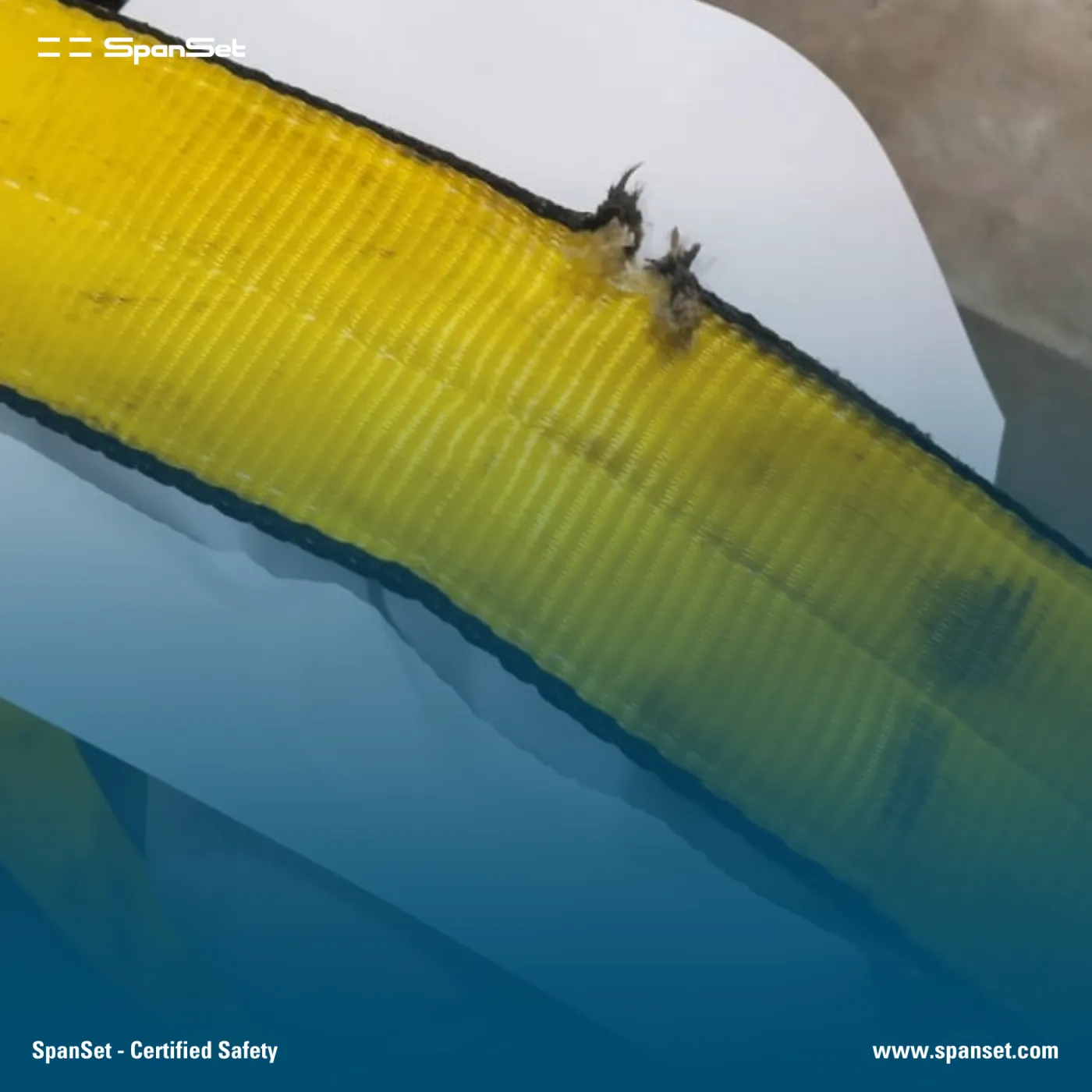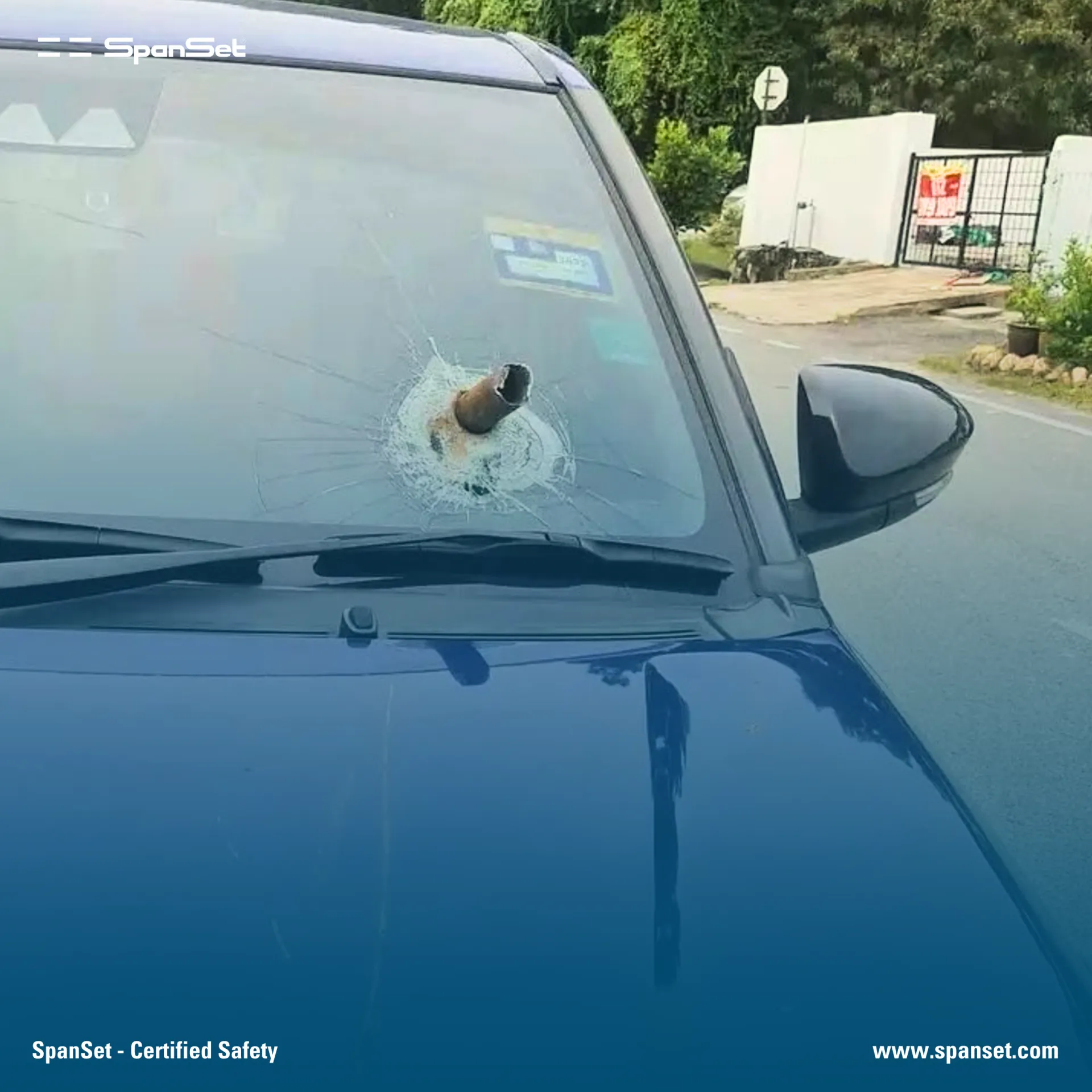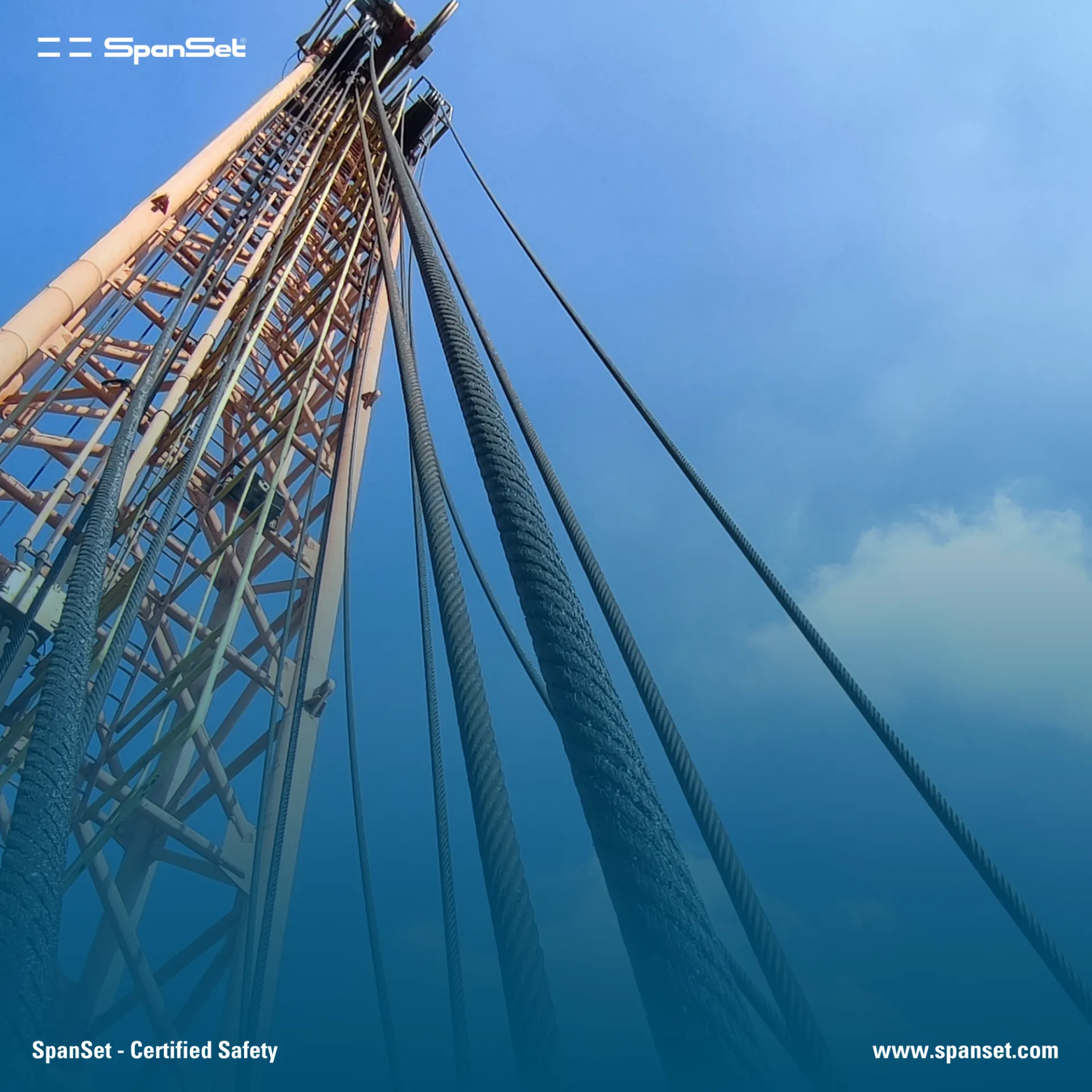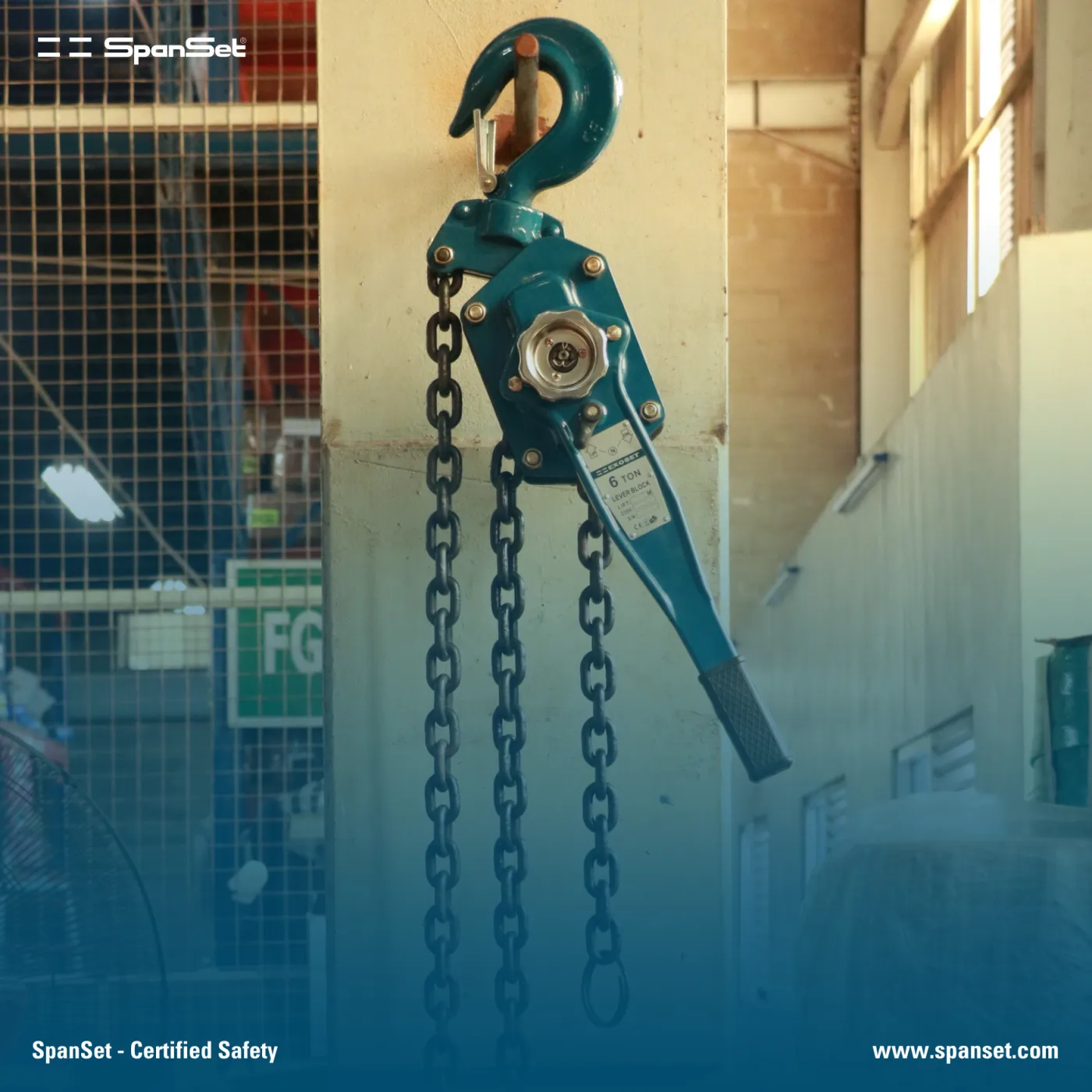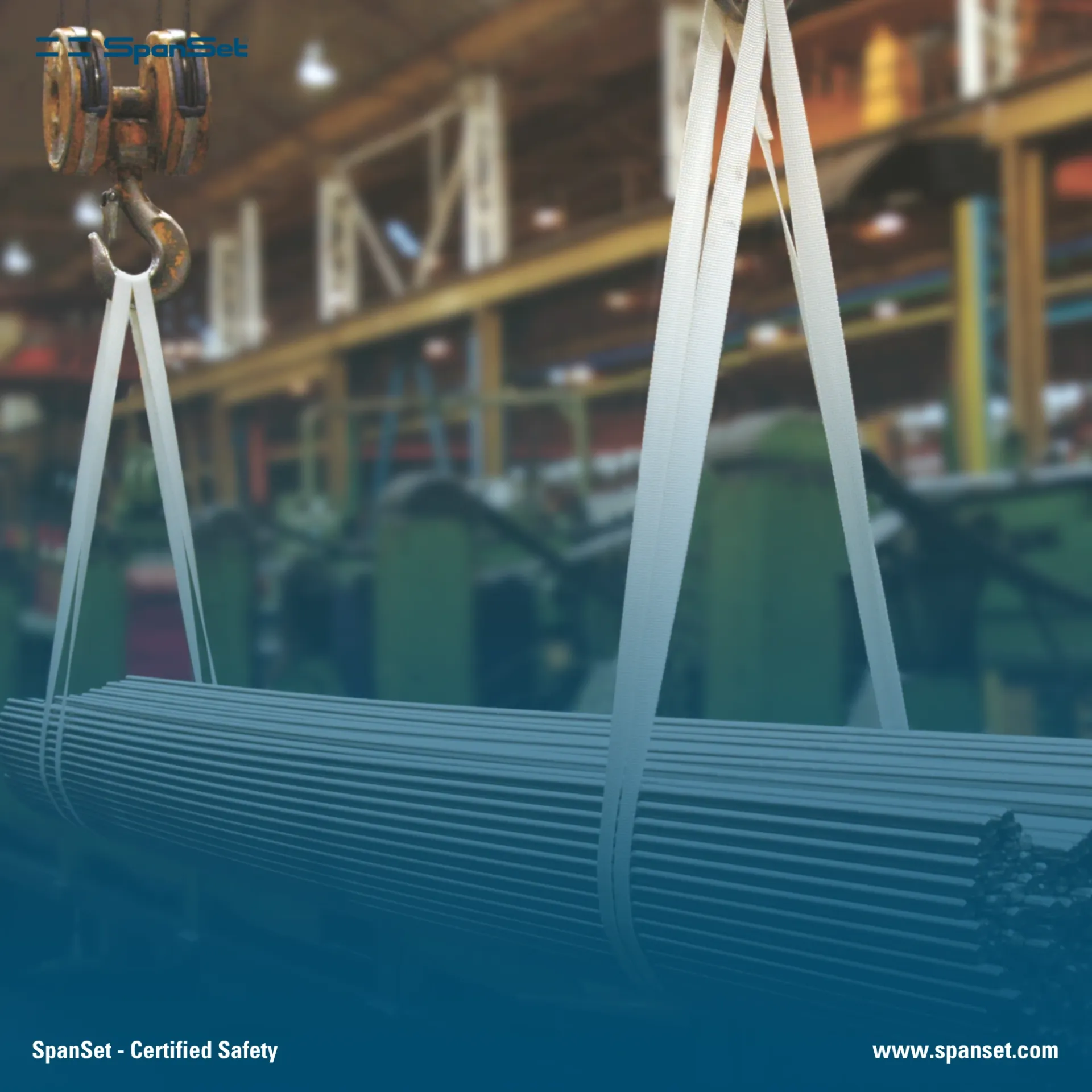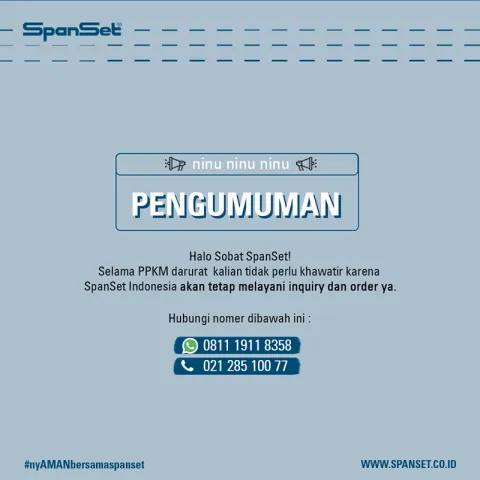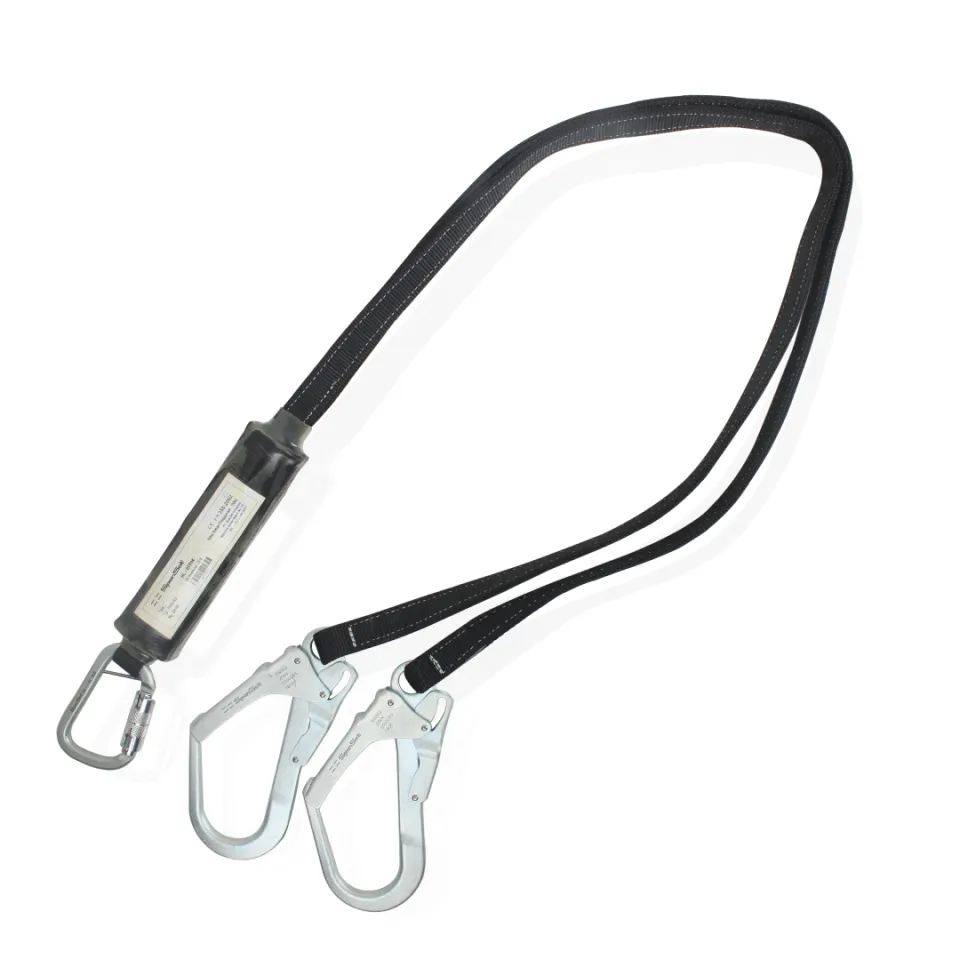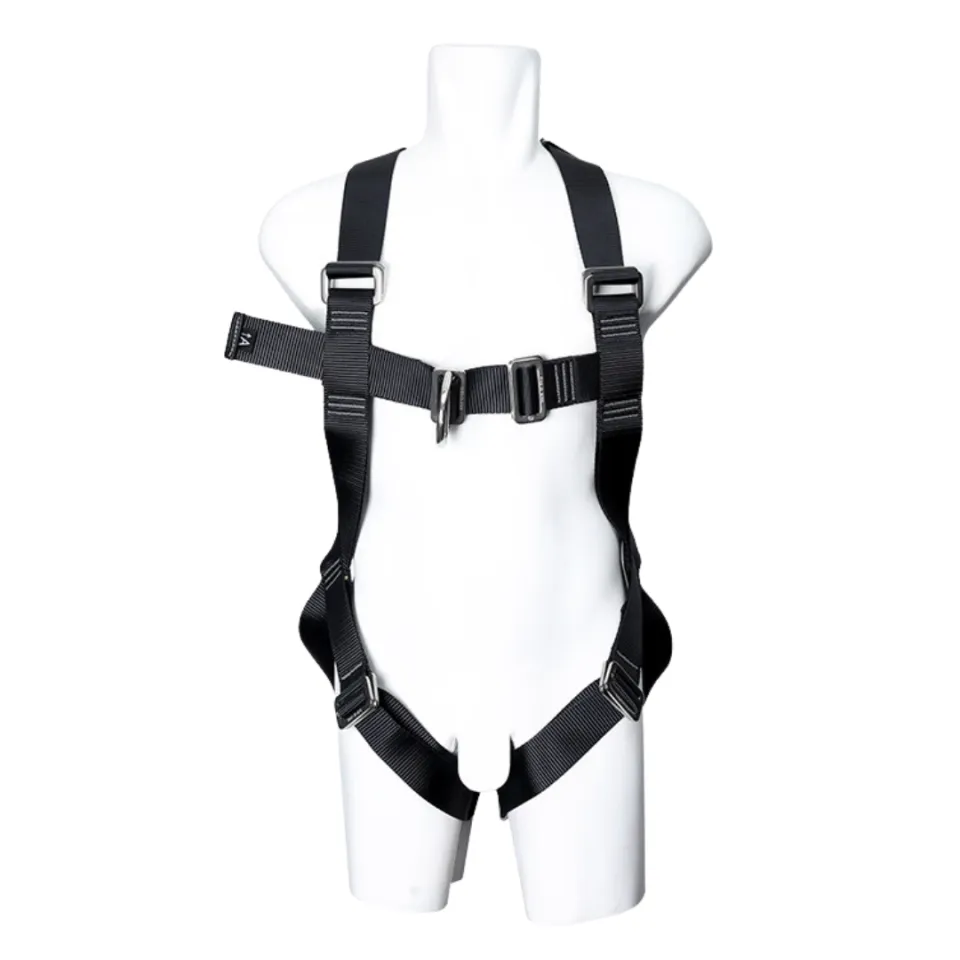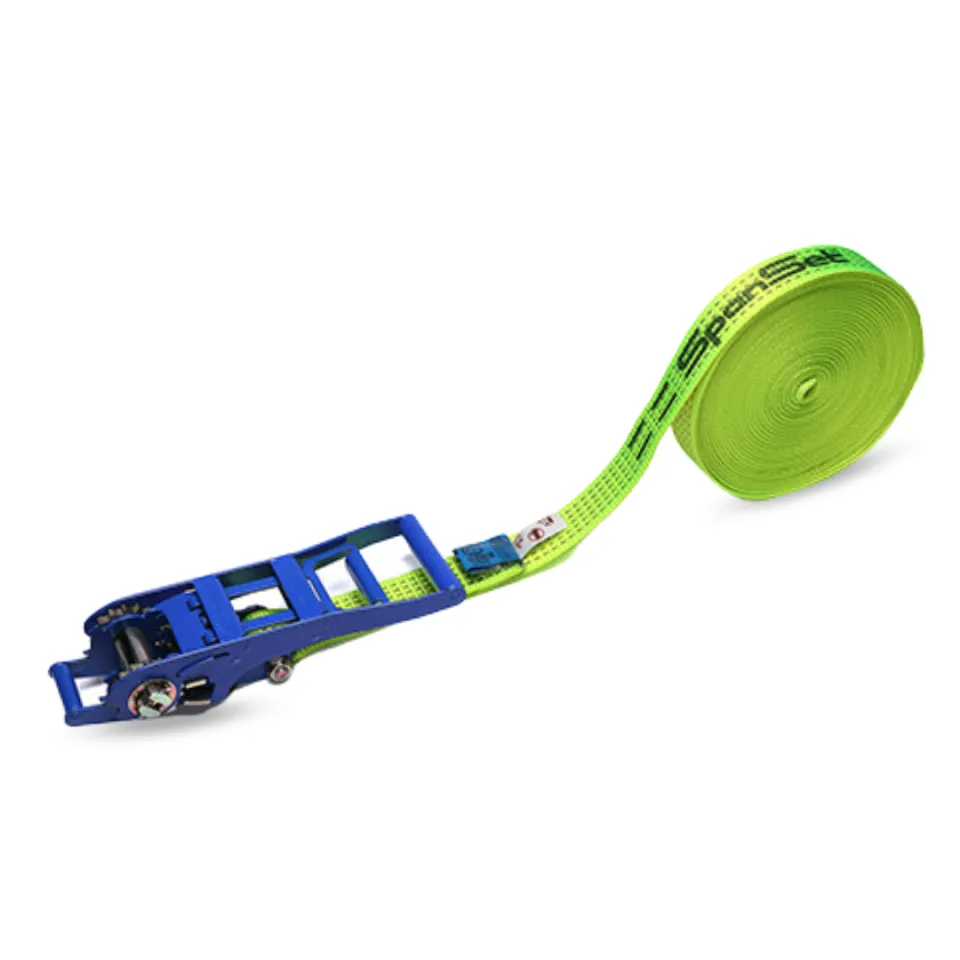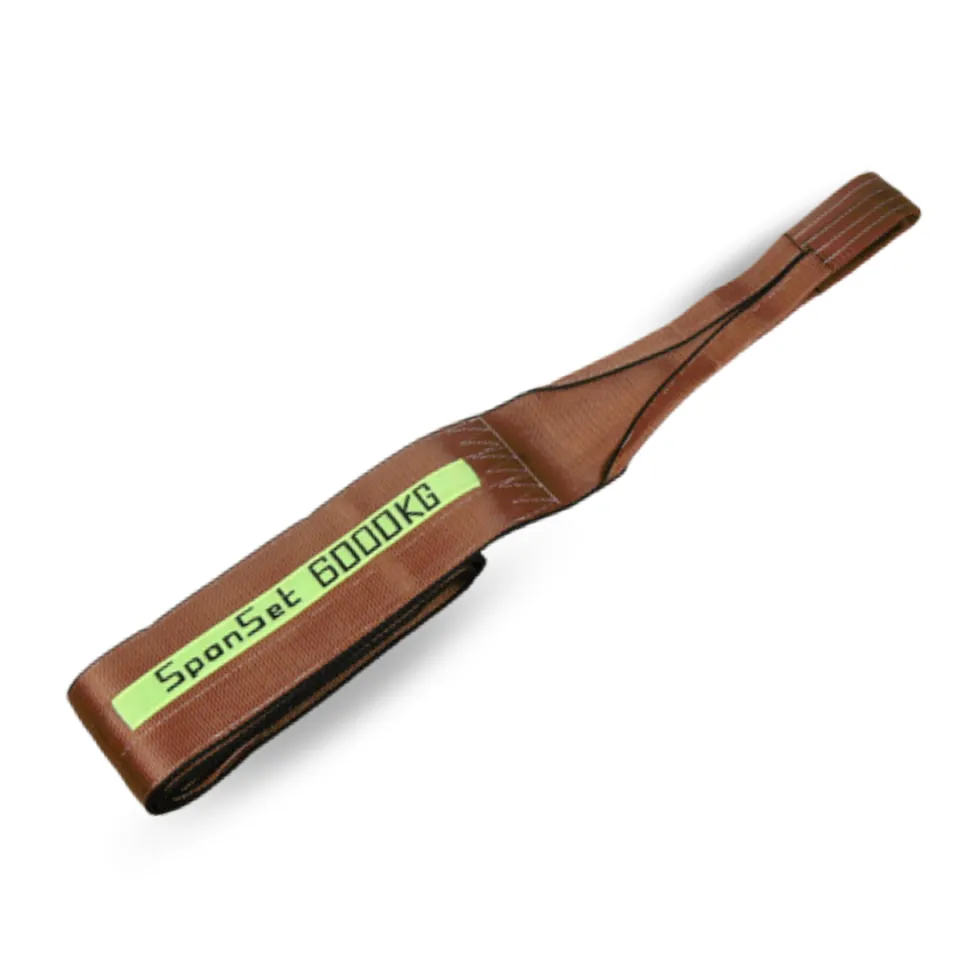Working at Heights & Fall Protection
NEWS & ARTICLE
Increase your knowledge by reading the articles we provide related to work at height, rope access, load control to lifting & rigging.

Personal Protective Equipment (PPE)
Recognize Several Types of PPE According to the Work Location, What Are They?
Personal Protective Equipment (PPE) is designed to protect workers from accidents and hazardous materials. However, not all PPE suits all jobs.
Learn about the different types of PPE based on work locations and ensure you’re using the right gear for the job.
Understanding Harnesses and Their Components
Working at heights requires a full body harness to ensure safety. With various safety components, harnesses can be confusing to identify and replace.
Learn about different types, including full arrest, controlled descent/ascent, confined space access, ladder climbing, and work positioning harnesses.
Using a Harness but Still Falling and Dying? It's Possible!
Working at heights is inherently risky, and using fall protection PPE like a harness doesn't completely eliminate the risk.
Discover the golden rules for working at heights and how the Gotcha CRD Rescue Kit can save lives
How to Maintain and Care for a Full Body Harness to Ensure Safety
Working at heights requires reliable safety equipment, and a full body harness is one of the most important. However, maintenance and care for the harness are often neglected.
Discover the essential steps for cleaning, inspecting, storing, and using your harness to ensure safety and longevity.
Double Lanyard and Full Body Harness SpanSet: Safety Protection for Working at Heights
Safety is crucial when working at heights. The Double Lanyard provides extra security, while the Full Body Harness prevents free falls.
Learn how to properly use and maintain these tools to minimize risks and ensure safety at heights.
Safeline: A Fall Protection System at Heights
Safeline is essential for preventing falls and ensuring safety at heights. Comprised of components like ropes and stainless steel, it can be installed horizontally or vertically on building structures.
Learn about the main functions, types, and uses of Safeline systems in various industries.
Safeline System: How Important Is It for Those Working at Heights?
When working at heights, you must be 100% focused. Falling from heights is one of the leading causes of workplace accidents. Your hands and feet should be free to work, not to prevent falls.
Learn why a Safeline System is crucial for ensuring safety from the moment you start climbing until you finish your job.
Preventing Suspension Trauma with Suspension Trauma Relief Straps
When working at heights, safety is crucial. Suspension trauma can be life-threatening, but with SpanSet Suspension Trauma Relief Straps, you can ensure your safety.
Learn how these innovative straps can save lives and prevent serious injuries.
7 Essential PPE for Working at Heights
Working at heights is challenging, isn't it? Well, this is where Personal Protective Equipment (PPE) is important for those of you who work at heights.
In this article, we will discuss seven types of PPE that should be on your list. Let's explore them one by one and find out the benefits of each tool!
Understanding and Functions of the Lanyard Safety Harness: What You Need to Know
Do you really understand what a safety harness lanyard is? What are the main functions of this tool and how does it work? In this article, we will discuss in depth about the meaning and function of safety harness lanyards that you must know.
Types of Webbing Slings You Must Know to Avoid Choosing the Wrong One
When working with lifting equipment, webbing slings become one of the most needed equipment. However, many are still confused about choosing the right type of webbing sling for their needs. To help you, here are the kinds of webbing slings and their advantages!
Types of Safety Harness Lanyards, Don't Get it Wrong!
In the world of work involving heights, safety is a top priority. One tool that should not be ignored is the safety harness lanyard. In this article, we will discuss the various types of safety harness lanyards on the market.
What’s the Difference Between Round Sling Belt and Webbing Sling? Here’s the Answer!
In fact, choosing the right sling is crucial to ensure safety and work efficiency. In this article, we aim to help you understand the important differences between round sling belts and webbing slings.
Let’s dive in to find the answer!
5 Functions of Full Body Harness for Worker Safety
As a company that cares about worker protection, the use of full body harnesses is an important step.
However, do you fully understand the function of a full body harness? Let's read more to get useful information about the function of a full body harness!
How to Use a Body Harness Correctly, Safely and Properly
A body harness or safety belt is one of the important equipment to protect workers who work at heights. Correct use not only ensures safety, but also comfort while working.
However, many people still do not understand how to use a body harness correctly. So, read the following article to find out how to use it!
Understanding Shock Packs on Lanyards and Their Purpose
Work safety at height is a top priority for any company, and one essential tool for ensuring this safety is the lanyard, especially those equipped with a shock pack.
In this article, we’ll explain what a shock pack (or energy absorber) is on a lanyard and share everything you need to know about this essential tool. Keep reading to learn more!
How to Maintain a Body Harness for Safe Use
For those of you who work in the construction sector or jobs that require fall protection equipment, understanding how to care for body harnesses is very important. With proper care, body harnesses can last a long time and remain effective when used.
So how do you care for it? Check out the tips here!
Complete Guide to Using Ratchet Tie Down Correctly
For those of you who frequently use this tool, understanding the correct instructions for using a ratchet tie down is an important step to ensure safety.
With this article, we will guide you in using ratchet tie downs effectively!
Working at Heights & Fall Protection
Completing Working at Heights Requirements to Reduce Risks
Working at heights requires strict adherence to safety regulations and the use of personal protective equipment (PPE). Learn the essential requirements to ensure safety, including planning, work procedures, safe working techniques, competent workforce, and proper PPE.
TKBT and TKPK Training: Enhance Your Knowledge About Heights!
Working at heights is a high-risk job requiring proper training and knowledge. TKBT (High Building Workers) and TKPK (Working at Heights) training programs are essential for learning how to prevent dangers and ensure safety. Understand the differences between TKBT and TKPK.
Get to Know the Basic Techniques of Occupational Safety and Health (K3) When Working at Heights
Working at heights involves significant risks. Understanding and applying basic K3 techniques is essential for safety. Learn about the crucial measures every worker should take to prevent accidents and injuries.
TKBT and TKPK Training for High-Altitude Workers
Working at heights comes with significant risks and responsibilities. High-altitude workers in construction, maintenance, or tree work must understand the importance of Working at Heights Training (TKBT) and Safety Training at Heights (TKPK) to enhance safety and skills.
Learn about the benefits and essential training materials to create a safer and more productive work environment at heights.
Prevent Fall Hazards with This Protective Equipment!
Working at heights poses significant fall risks. To ensure safety, it's crucial to use appropriate protective equipment.
Learn about the essential gear for fall protection, including type II helmets with V-Straps, full body harnesses, and various types of lanyards.
Securing Heights: Identifying Hazards in High-Altitude Workplaces
Working at heights is challenging and requires a deep understanding of potential hazards to create a safe work environment.
Learn how to identify and manage hazards effectively through terrain analysis, equipment inspection, health evaluation, and wind and air pressure management.
Gotcha Rescue Kit: High-Altitude Rescue Solution
Safety equipment has evolved significantly to enhance efficiency in emergencies. The Gotcha rescue kit, a standout product from SpanSet, is a prime example of this innovation.
Learn about its history, importance, and specifications, and discover why it is the top choice for high-altitude rescues.
What is a Permanent Lifeline and Its Function for Height Workers?
You may have heard of the term lifeline.
However, do you really know what a permanent lifeline is and what it does? Before we go any further, let's take a look at the functions and benefits of permanent lifelines for high-altitude workers.
Ratchet Tie Down: A Key Tool for Safe Transportation
Ratchet tie down is one of the tools often used in logistics and transportation. This tool is useful for securing goods so that they do not move during the trip.
Although it looks simple, using ratchet tie down requires special understanding! Here's how!
Dont Get It Wrong, This is the Difference Between TKPK 1, 2 and 3
TKPK, or Workers at Height, is one type of contract that is widely used in this field. To facilitate the arrangement, TKPK is often divided into three categories, namely TKPK 1, TKPK 2, and TKPK 3.
So what is the difference between the three? Find the answer here!
Sequence of K3 Implementation in Construction Activities, Check it Out Now!
The implementation of K3 in construction is the main key to reducing the risk of work accidents.
However, what is the actual sequence of K3 implementation in construction activities? Let's discuss it in more depth to provide a clearer understanding.
What is a Test Inspection? How Important is it for the Job?
Test inspections often appear in the industrial world, especially related to work safety and heavy equipment maintenance.
However, what exactly is a test inspection and how important is its role in ensuring safety in the workplace?
What is the Difference Between TKBT 1 and TKBT 2? Let’s Find Out Here!
Maybe you are still wondering what exactly is the difference between TKBT 1 and TKBT 2? This question often arises among workers and construction project managers.
There are significant differences in terms of the level of ability and type of tasks between TKBT 1 and TKBT 2. Let's discuss further the differences between TKBT 1 and TKBT 2.
Difference Between Wire Rope Sling and Webbing Sling
There are two types of slings that are most commonly used, namely wire rope slings and webbing slings.
Both have different characteristics and advantages. So, which one is more suitable for your needs? Let's discuss the differences between wire rope slings and webbing slings.
NoCut Sleeve Function, Effective Protector for Sling
NoCut Sleeve is an additional protector that can be attached to a sling.
Using a sling in operational activities, it is important to understand the function of the NoCut sleeve.
Let's see the further review to find out why NoCut Sleeve is an effective protective solution!
How to Install Nocut Sleeve on Sling Correctly
Understanding how to install nocut sleeve on sling correctly is very important to ensure the durability of the tool.
In this article, we will explain how to install nocut sleeve properly. Follow the guide below so you don't make a mistake!
Tips for Maintaining NoCut Sleeves for Long-Lasting Durability
To keep your NoCut Sleeve in top condition, we will provide some practical care tips.
These tips will help you maintain the quality of this tool. Let's look at some effective ways to care for your NoCut Sleeve.
How to Use Gotcha Rescue Kit CRD, Complete Guide!
The Gotcha Rescue Kit is a lifesaving tool designed for emergency situations at height. But do you know how to use the Gotcha Rescue Kit effectively?
This article provides step-by-step instructions on how to use the Gotcha Rescue Kit CRD, ensuring smooth and safe rescue operations. Let’s dive in!
How Retracting Lanyards Work: Follow These Steps!
One of the tools that is very necessary when working at heights is a retracting lanyard. This device is designed to keep users safe by holding and securing their body position while at height. However, how does this retracting lanyard actually work?
Let's take a look at the following explanation!
Lifting and Securing Loads
Shackles: Understanding the Types and Uses for Industry
Shackles, including bow shackles and round pin shackles, are essential tools for lifting and towing. But what exactly are shackles, and how many types are there?
Learn about the different types of shackles, their shapes, and locking mechanisms to choose the right one for your needs.
Requirements for the Best and Safest Webbing Sling
Webbing Slings are essential for lifting heavy loads safely. Made from high-strength polyester, they come in various widths and capacities.
Learn about key criteria like compliance with EN 1492-1 standards, durable materials, and protective coatings.
Understanding the Difference between LC and WLL in Ratchet Lashing
Ratchet lashing is crucial for securing loads safely and efficiently. However, many are confused about why the term Lashing Capacity (LC) is used instead of Working Load Limit (WLL).
Learn about the fundamental differences between LC and WLL and why LC is more appropriate for ratchet lashing.
Wire Rope: A Closer Look at the Invisible Backbone
Often overlooked amidst large projects, wire rope holds extraordinary strength and skill. It is the backbone that supports heavy loads in construction, rigging, and transportation.
Learn about its crucial role in various industries and how its durability ensures safety and efficiency.
IS IT SAFE TO CONNECT 2 WEBBING SLINGS?
In lifting operations, using a short webbing sling or round sling can be tempting to tie two together to extend their length. DO NOT DO THIS! IT IS NOT SAFE! Knots weaken the sling and can lead to fatal accidents. Use a Joker Hook Instead. One Tool, Two Functions.
Ideal Solution for Lifting Loads Up to 30 Tons with Four Ply Webbing Sling
The four ply webbing sling (4ply) from SpanSet offers extra security for lifting heavy loads. Made from high-density polyester fibers, it has a higher lifting capacity despite a narrower belt.
Learn how to safely lift loads with the 4ply webbing sling, the importance of proper inspection, load weight determination, and safe lifting angles.
Why 4% Elongation on SpanSet Ratchet Lashing is Important for Load Safety
SpanSet Ratchet Lashing is essential for securing loads on trucks, ships, or trains, ensuring stability during transport. The 4% elongation allows the securing material to stretch slightly, preventing damage to the load from uneven pressure and extending the lifespan of the lashing.
Learn why this elongation is crucial and how to ensure your equipment remains within safe limits.
The Importance of Understanding Safety Factor in Load Lifting
Load lifting failures often result from overload due to miscalculations and misunderstandings about the safety factor.
Learn why accurate calculations and a clear understanding of the safety factor are crucial to prevent lifting failures and ensure safe operations.
Galvanized vs Ungalvanized Wire Rope, Which is Better?
Wire rope is essential for lifting, pulling, and tying tasks. But which type should you choose: galvanized or ungalvanized?
Learn the differences, benefits, and ideal applications for each type.
Let's Get to Know Ratchet Lashing
Ratchet lashing secures loads on vehicles, preventing movement during transit.
Learn more about the importance and features for maximum safety!
Recognizing Signs of Damage on SpanSet Webbing Sling
SpanSet webbing slings are essential for lifting heavy loads safely and efficiently. However, they can suffer damage over time. Learn to identify signs of damage, such as loose stitching, wear and tear, color changes from heat exposure, knots, holes, and chemical exposure. Recognizing these signs ensures timely action to replace damaged slings, maintaining safety and performance. Discover SpanSet's guidelines for proper use, inspection, and maintenance to extend the lifespan of your webbing slings.
SpanSet Cargo Straps: The Best Solution for Secure Transportation
In logistics and transportation, the safety and effectiveness of cargo transport are crucial. Cargo straps are essential tools that ensure cargo remains secure during transit. Discover the definition, function, and types of vehicles that can use cargo straps, as well as SpanSet's high-quality products.
Learn how SpanSet cargo straps can make your transport safer and more efficient!
Beware of Webbing Damage for Your Work Safety
Webbing or safety belts are essential tools for field workers, crucial for lifting and holding loads. Ensuring webbing is in excellent condition is vital for safety.
Learn to identify unsafe webbing conditions that must be replaced immediately.
Preventing Driving Accidents by Properly and Safely Securing Loads
Transporting goods with trucks and large vehicles is essential, but improper securing can lead to dangerous accidents.
From using high-quality securing devices to proper load arrangement, find out how SpanSet products can help you prevent accidents and ensure safety on the road.
What Does IWRC Wire Rope Mean? Read Here for an Explanation!
IWRC stands for Independent Wire Rope Core, the innermost core of the wire rope, providing strength and structure. Made of steel, IWRC wire ropes have a high breaking load, are resistant to pressure, but can rust if not maintained.
Learn about its characteristics and applications in industries like maritime, construction, and mining.
Chain Block: Don't Confuse It with Lever Block!
Chain blocks and lever blocks are both essential lifting tools but serve different purposes. Chain blocks are ideal for vertical lifting, while lever blocks can also pull horizontally. Understanding these differences is crucial for selecting the right equipment for your lifting needs.
Color and Capacity of Webbing Slings, Know It Now!
Understanding the capacity and color of webbing slings is crucial for safety in construction and industrial projects. The correct selection of the webbing sling's color and capacity significantly impacts on-site safety.
Do you know the meaning behind the different colors of webbing slings? If not, let’s dive into this article for a complete explanation!
SPANSET INDONESIA TRAINING COURSE
Tambah pengetahuan kalian dengan mengikuti pelatihan bersama kami, mulai dari pelatihan kerja pada ketinggian (work at height), rope access, load control sampai dengan lifting & rigging.
